LG B5 is a really good OLED TV that shows you don’t need to spend a fortune for very good quality. It offers deep blacks typical of organic panels, very good colour reproduction – especially after calibration – and pleasant HDR movie watching experiences. All of this makes for evening screenings that can deliver cinematic emotions even without reaching for much more expensive screens. The fluidity of the image and the set of features for gamers also deserve recognition. The 120 Hz panel, low input lag, full support for HDMI 2.1, variable refresh rate, and Dolby Vision Gaming mode make the B5 a very versatile screen – great for both gaming and watching sport. The friendly webOS system, along with the Magic remote, provides convenient access to content and makes operation easier. However, not everything is perfect. Compared to the B4 model, there is a slight drop in brightness, especially in very bright rooms. For some users, the lack of DTS audio support may also pose a problem, which could necessitate some workarounds when connecting Blu-ray players. Still, LG B5 remains one of the most sensible choices for those looking to step into the world of true cinema – without overpaying, but also without making major compromises. It’s a screen that doesn’t need to prove anything – it simply delights the eye with great picture quality and works as it should.
- Matching (Score)
- Our verdict
- TV appearance
- Where to buy
- Contrast and black detail
- HDR effect quality
- Factory color reproduction
- Color reproduction after calibration
- Smoothness of tonal transitions
- Image scaling and smoothness of tonal transitions
- Blur and motion smoothness
- Console compatibility and gaming features
- Input lag
- Compatibility with PC
- Viewing angles
- TV efficiency during daytime
- Details about the matrix
- TV features
- Apps
- Playing files from USB
- Sound
LG OLED B5 vs LG QNED86A / QNED85A / QNED87A
Direct compare
QNED85A / QNED86A / QNED87A / A6A / A6B / A6C
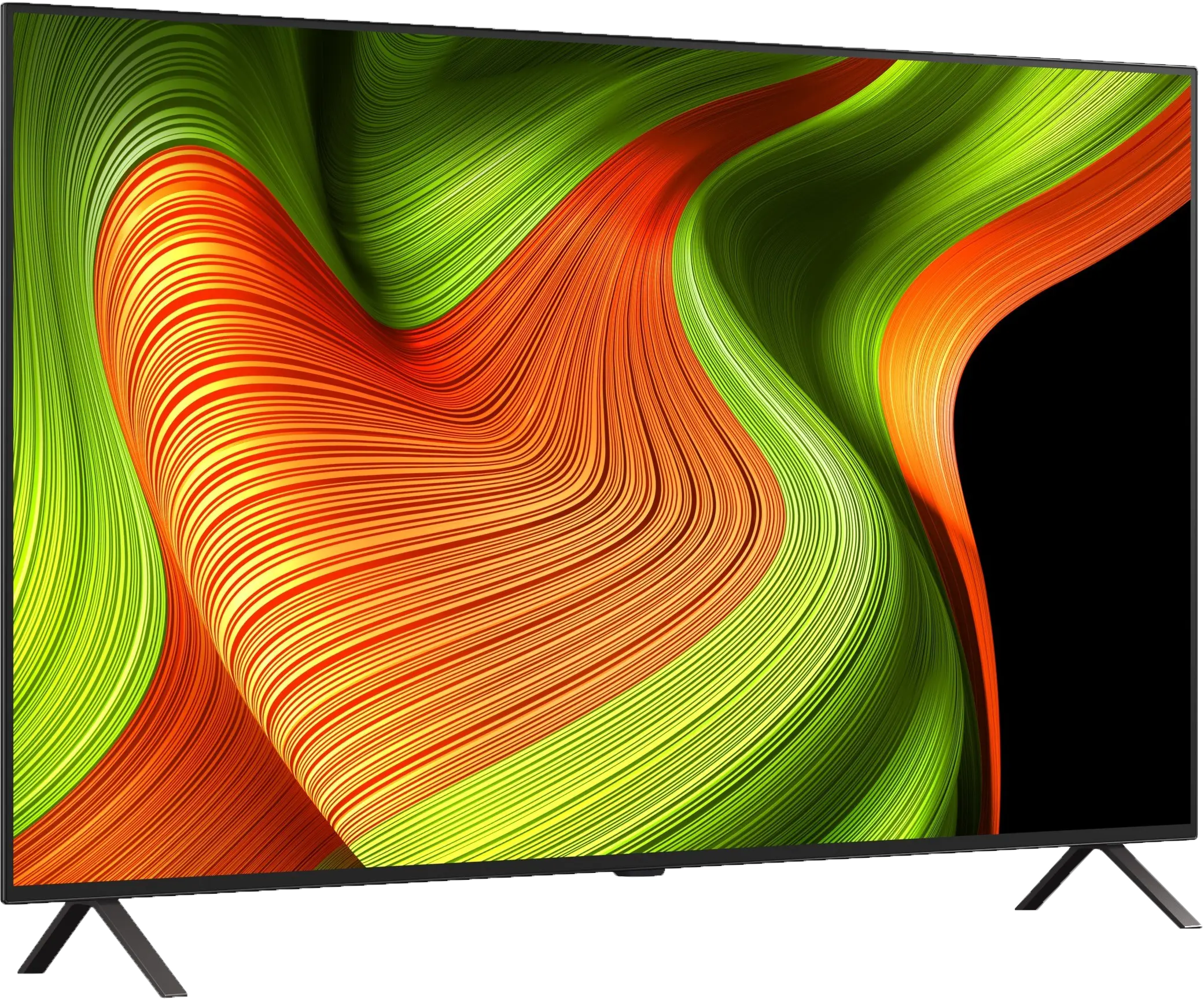

Panel type: WRGB OLED
Resolution: 3840x2160
System: WebOS
Model year: 2025
Complete the survey to find out the result

Panel type: LCD IPS
Resolution: 3840x2160
System: WebOS
Model year: 2025
Complete the survey to find out the result

Overall rating
7.8
7.0
Movies and series in UHD quality
7.9
6.4
Classic TV, YouTube
8.6
6.2
Sports broadcasts (TV and apps)
8.5
7.2
Gaming on console
9.2
8.4
TV as a computer monitor
7.6
8.0
Watching in bright light
4.9
5.8
Utility functions
7.9
8.4
Apps
9.1
9.1
Sound quality
7.0
6.0
Complete the survey to find out what fits your preferences
Advantages
Perfect black and contrast
Pleasant HDR image
Excellent colour reproduction capabilities
120Hz OLED panel - great motion smoothness
4 HDMI 2.1 ports and full support for gamers (VRR, ALLM, Dolby Vision Gaming, HGiG)
Very low input lag
Proper content scaling and good digital processing
Convenient webOS system with Magic remote
Built-in USB recording function from the built-in DVB-T/T2 tuners
120 Hz panel, great for sports and gaming
Very low input lag
Excellent for gamers (VRR, ALLM, HGiG etc.)
Full set of HDMI 2.1 ports
Good compatibility with PC (great font readability)
Bright picture (about 700 nits in HDR), suitable for moderately bright rooms
Good viewing angles (IPS)
Support for Dolby Vision
User-friendly webOS operating system with Magic Remote control featuring voice assistant
Ability to record programs to USB
Disadvantages
Average brightness and poor performance in bright rooms
No support for DTS formats
Different versions of the remote in derivative models – hard to predict which version we will get
Very poor black levels and contrast due to the IPS panel
Lack of the advertised 144 Hz in PC mode
Aggressive “light stripes” when local dimming is turned on (edge local dimming ruins evening movie sessions)
Confusion in model names and versions – even TVs with the same name in different stores can have different stands (central or two legs) or frame colours, which can be quite misleading when making a purchase.
Our verdict
QNED86A6A is a television that really does a great job in its price class when it comes to sports, gaming, and everyday TV viewing. The 120 Hz panel makes the image smooth, and the motion sharp, which will be appreciated by both fans and gamers. Additionally, it has low input lag along with a full suite of gaming features such as HGiG, VRR, and ALLM. The television works just as well with a computer as it does with a console, so in the office or on a desk in the 43” version, it will serve excellently as a work monitor. Another strong point is the webOS system. It’s a fast, stable, and app-rich operating system that paired with the Magic Remote provides very convenient operation. The new version of the remote is slimmer and fits better in the hand, and the on-screen cursor is a feature that many competitors lack. On top of that, there are classic features – USB recording, Bluetooth for headphones, and a full set of HDMI 2.1 with eARC and Dolby Atmos support. This makes the televisions from the QNED85 series some of the most "multimedia" televisions in their class. But there’s no point in sugar-coating it; this model also has some significant drawbacks. Its biggest disadvantage is undoubtedly the contrast, or rather the lack thereof. The IPS panel combined with the edge-lit “mini-LED” is just a very bad idea. The screen simply isn’t suitable for watching movies in a dark living room. Blacks are a greyish-blue, and local dimming can create strips of light reminiscent of lasers, which effectively ruins the viewing experience. For home cinema, it’s not a choice that can be recommended with full conviction. The second issue may not be directly related to the television itself but rather its sales. It concerns chaos in the naming conventions and differences in derivative versions. The same model, even with the same designation, can have a different colour frame or stand depending on the store. This can really be frustrating for the buyer and evoke a sense of confusion. To summarise briefly: LG QNED86A6A is a great television for sports, gaming, and everyday TV, with a convenient system and high functionality. But if you’re looking for a screen strictly for movies or series and require deep blacks, it’s better to look towards televisions that can actually be confidently referred to as Mini-LEDs.
TV appearance
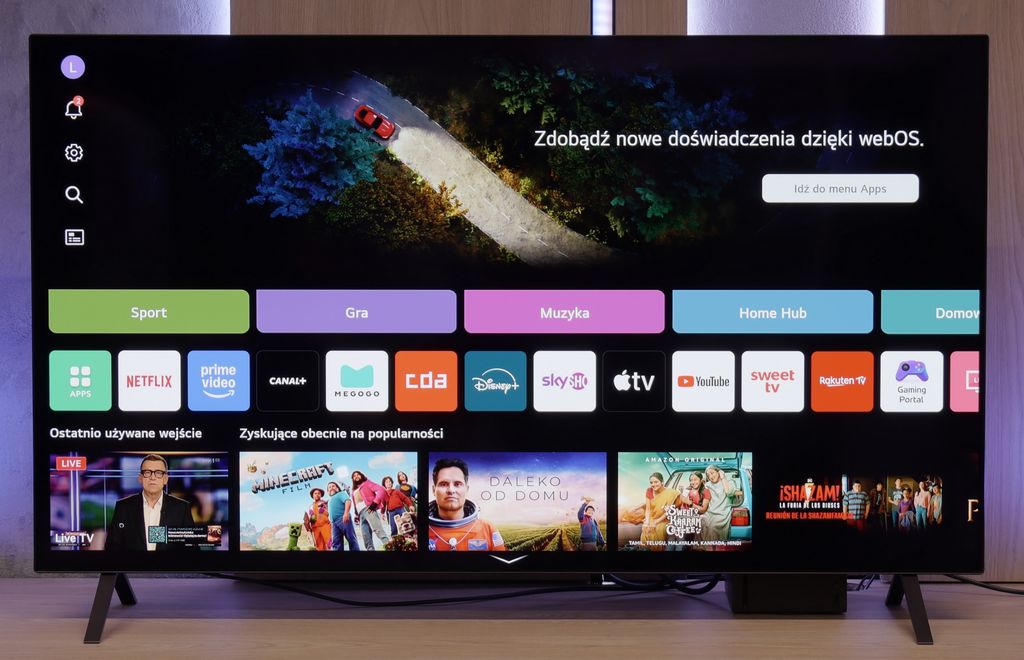
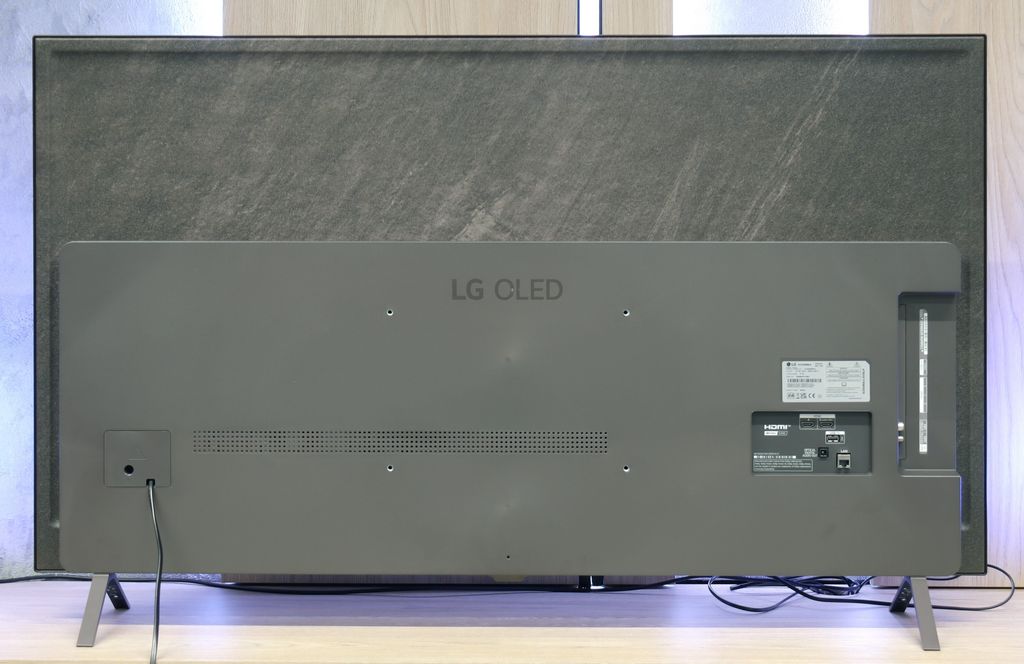
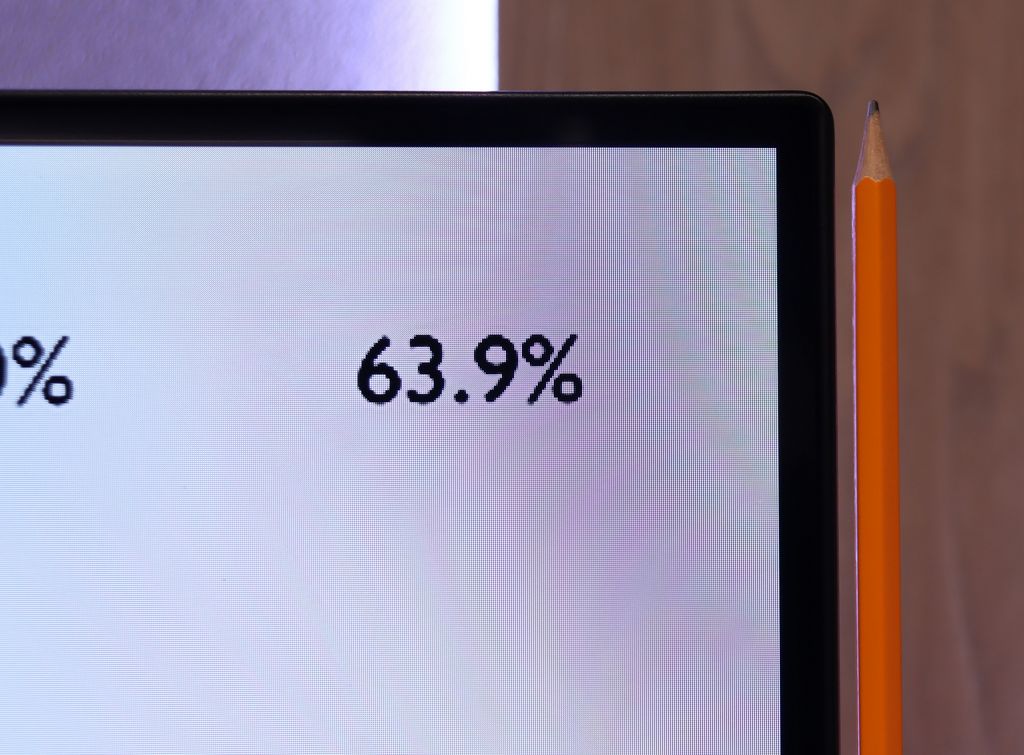



Contrast and black detail
10/10
3.7/10
Local dimming function: Yes, number of zones: 6 (1 x 6)
Contrast:

Result
∞:1

Result
∞:1

Result
∞:1

Result
∞:1

Result
∞:1

Result
4,050:1

Result
1,750:1

Result
4,800:1

Result
1,850:1

Result
1,350:1
Halo effect and black detail visibility:
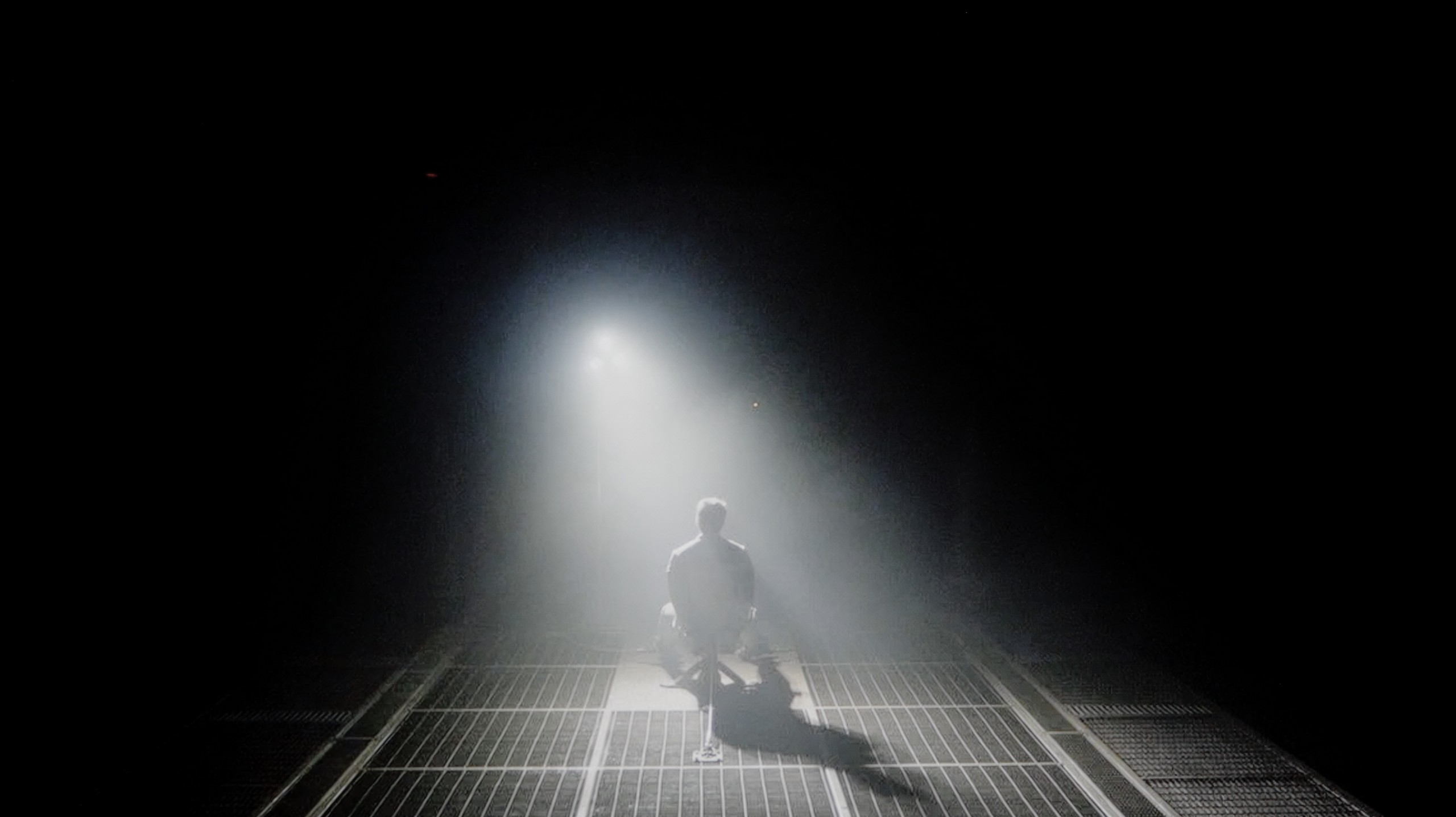

If you're looking for changes compared to last year's LG B4, we’ll clear up any doubts straight away – you won’t find any in this category at all. And that’s a good thing. Because how do you improve something that is already close to perfection? The LG B5, as a WOLED organic panel television, offers black scenes as dark as tar and contrast that’s hard to find even in the most expensive LCD screens. The screen is as clear as a bell – no bleeding, no streaks, no halo effects that can ruin the atmosphere in cinematic scenes. Here, everything is in its place. Details separate from black with surgical precision, nothing blurs together, even in the most demanding sequences from films like The Revenant or Oblivion. This is the type of television that can truly enchant you, especially when the room goes completely dark. When the lights go out, the LG B5 takes centre stage – and it does so wonderfully. In these conditions, OLED shines the brightest, and even top-end LCD models – despite advanced dimming and hundreds of zones – simply fall behind.
While the manufacturer describes the QNED86A as a Mini-LED television, there’s no sign of the multi-zone local dimming system known from pricier models. In practice, we have a classic edge lighting system, which only allows for dimming horizontal strips of the screen from top to bottom. Combined with a low-contrast IPS/ADS panel, the effect is simply poor. If we choose to leave local dimming on, a problem arises - the television can illuminate selected areas in such a way that it looks like “flying lasers” crossing the screen. This is very distracting and in such conditions, it’s hard to talk about truly cinematic experiences. Therefore, in our opinion, it's better to turn this function off. However, one must reckon with the fact that the contrast then drops to around 1500:1, but at least the image doesn’t irritate with artificial flashes.
HDR effect quality
6.2/10
6/10
Luminance measurements in HDR:

Result
587 nit

Result
593 nit

Result
628 nit

Result
589 nit

Result
470 nit

Result
602 nit

Result
524 nit

Result
690 nit

Result
512 nit

Result
500 nit
Scene from the movie “Pan” (about 2800 nits)
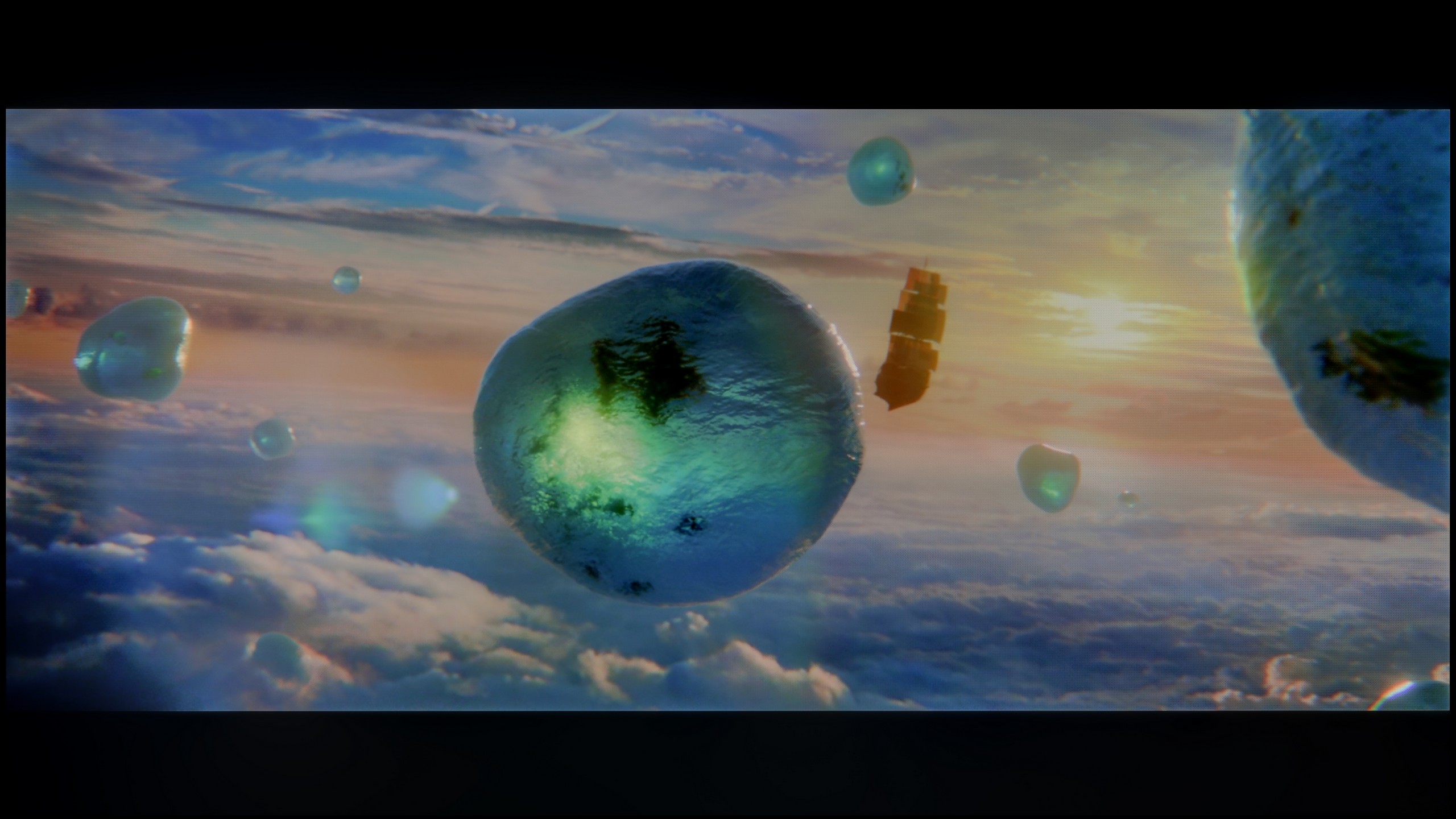

Scene from the movie “Billy Lynn” (about 1100 nits)
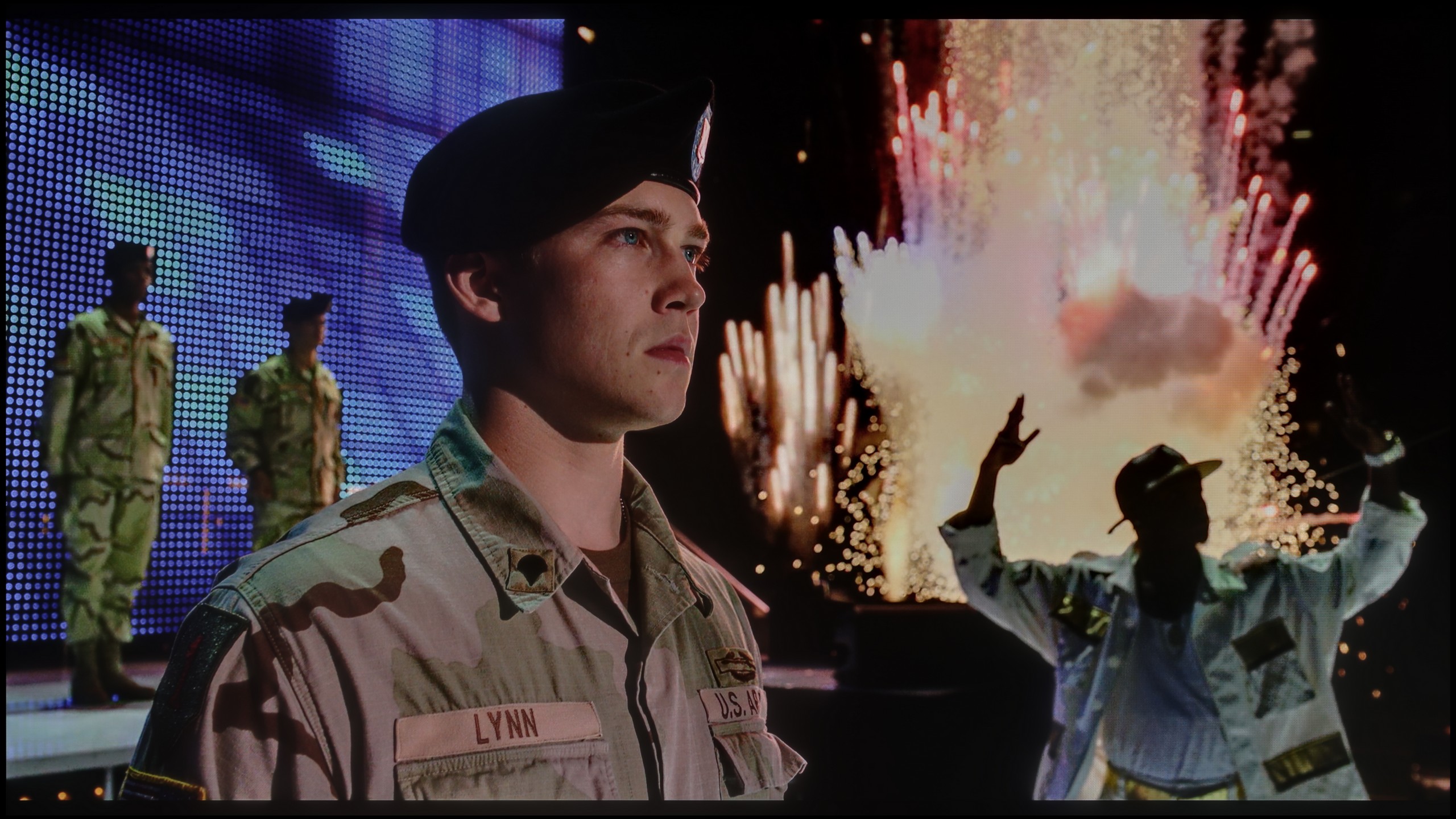

Static HDR10


Dynamic: Dolby Vision
Dynamic: Dolby Vision


HDR luminance chart:
LG QNED86A / QNED85A / QNED87A
HDR luminance
LG OLED B5
HDR luminance
Luminance of RGB colors
LG B5 is a moderately bright OLED TV. Regardless of the scene – it can generate about 500 nits of peak brightness. And interestingly, it does this even in full-screen shots flooded with white, where most OLEDs usually struggle. So, is this screen suitable for HDR films? Yes – absolutely, because such brightness really allows you to feel the magic of HDR effects. However, it’s worth noting that compared to last year's B4 model, the new B5 is darker – by about 100 nits. It may seem like a small amount, but at such average peak values, it makes a significant difference. Fortunately, the TV makes up for it with another strength – excellent coverage of the DCI-P3 and BT.2020 colour gamuts. This means HDR films look truly vibrant, lively, and impressive even in more demanding scenes.
Against the backdrop of contrast and black, the brightness of the QNED86A and the overall HDR effect fare much better. It's a television that can achieve around 700 nits under the best conditions, so in terms of luminance alone, there’s nothing to be ashamed of. As a result, scenes with strong lights, explosions, flashes, or bright parts of the landscape – look clear and can make an impression. Interestingly, even in tougher moments with small, contrasting elements on the screen, the television does well with backlighting and details are quite visible. The problem arises when there are many dark tones. The lack of effective local dimming means that black virtually disappears, and instead, we get a grey glow spreading across the entire screen. This kills the depth effect and causes the image to appear flat, as if it lacks cinematic character. In bright animations or family films with vibrant colours, this won't be an issue, as the colours and bright light dominate. But in horror films or productions set in darkness, these limitations are strongly felt. As a consolation, it’s worth noting that the QNED86A is essentially a QLED television with an LED PFS filter, which gives it very good coverage of wide colour gamuts. Both the DCI-P3 palette and the wider BT.2020 perform solidly here. This means that colours in HDR films are saturated, juicy, and have the right depth – even if the black itself is disappointing, the colours can save the viewing experience and make the image look appealing.
Factory color reproduction
8.2/10
5.6/10
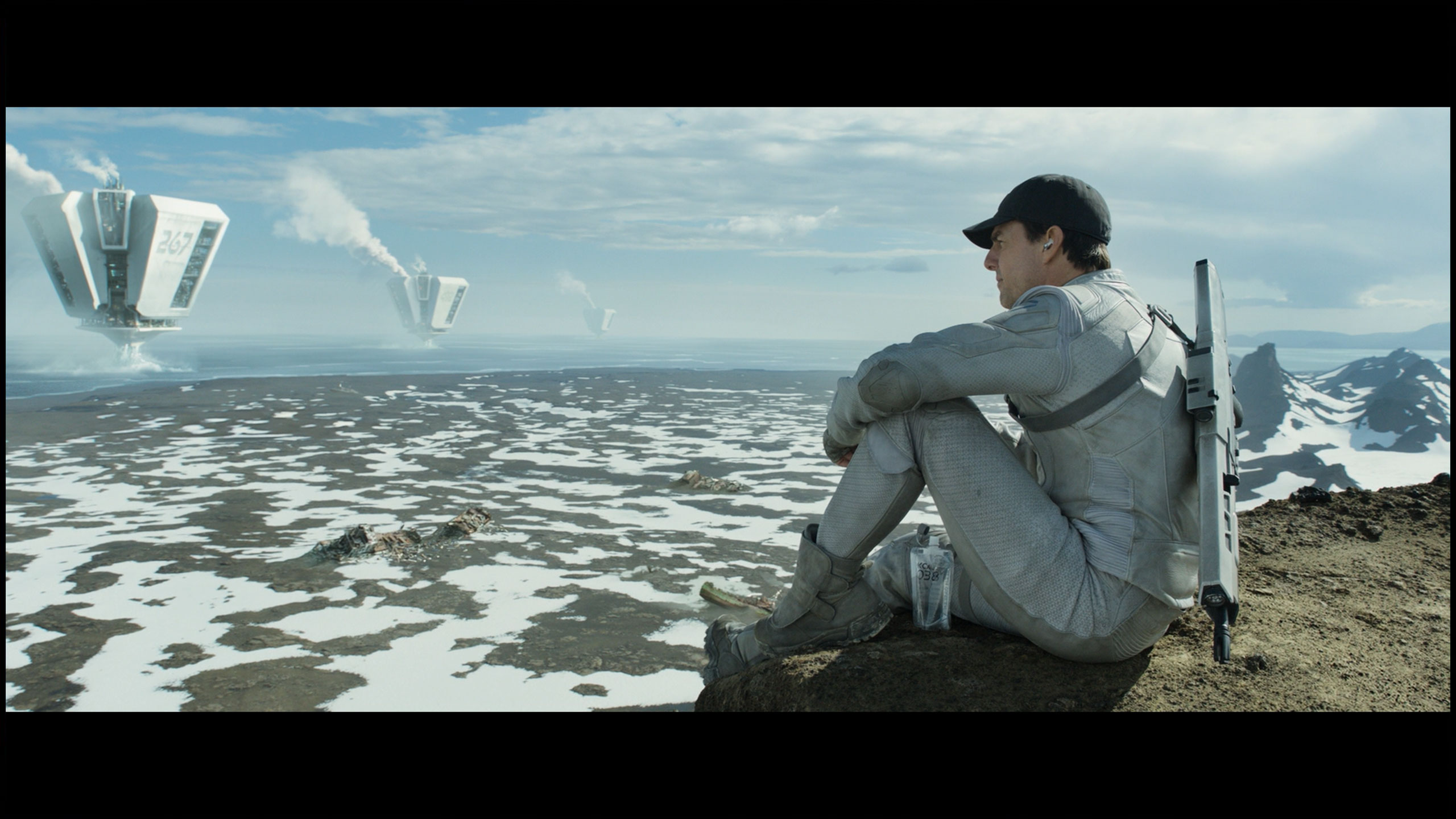
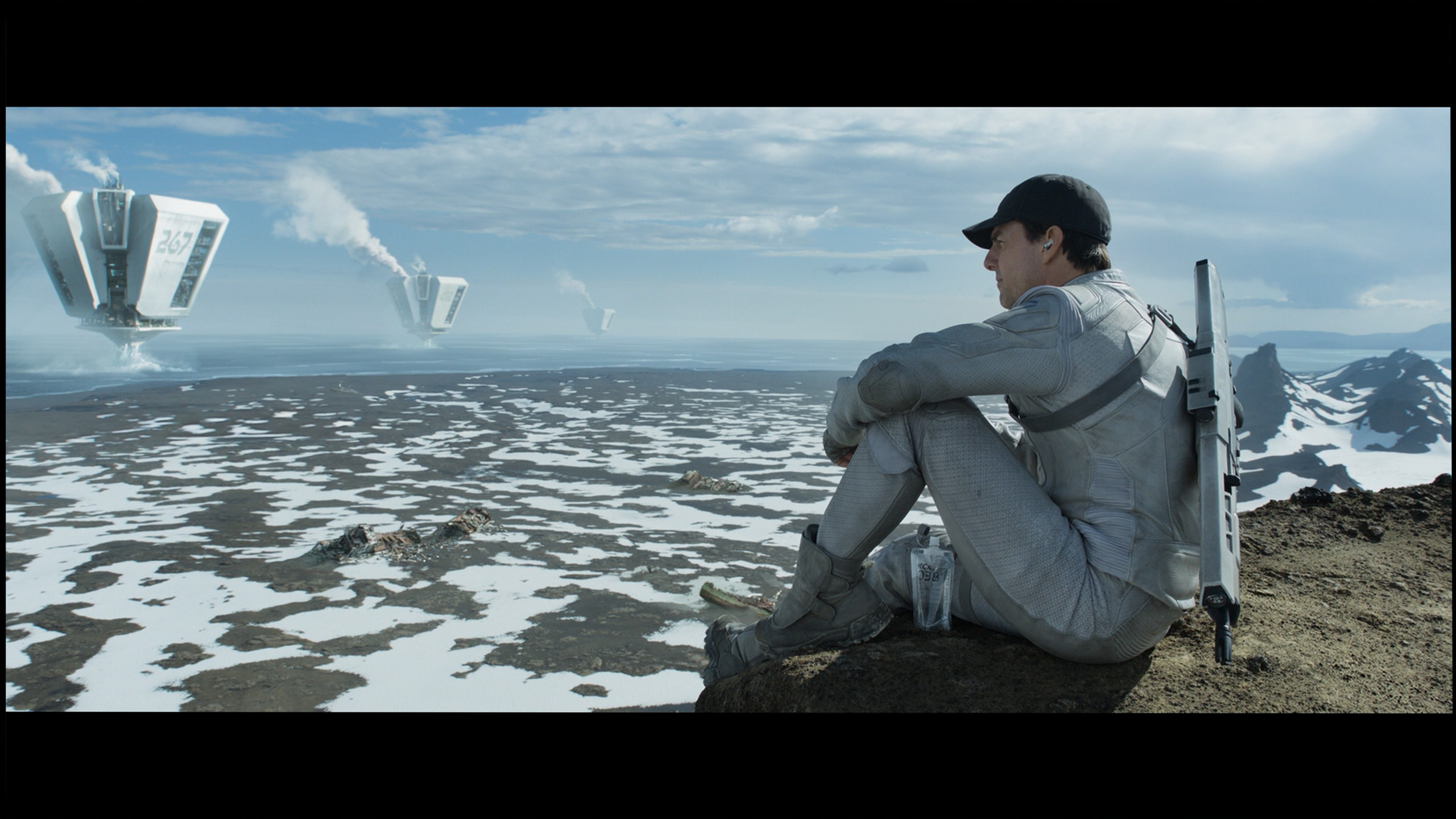
Factory Mode
After calibration


Factory Mode
After calibration
B5 was tested in Filmmaker mode and… we’d love to see more TVs like this right out of the box. Seriously. The white balance is very well set – there’s practically nothing to nitpick. Well, if you really want to, you might notice a slight deficiency in blue, which can make the overall picture have a slightly yellowish tint. But that’s just our editorial nitpicking. Most of you probably won’t even notice. We also have minimal reservations about brightness management in HDR format. The EOTF curve – which is responsible for how the TV distributes brightness across the scene – sits just below ideal. In practice, it may happen that the darkest parts of the image appear too dark and simply… disappear. But these are details that only come out in measurements. Generally: we are impressed. But we also know that LG TVs respond very well to professional calibration. You can extract nearly reference-quality picture from them, so – although it’s already very good out of the factory – we took the liberty to go a step further and fine-tune everything to the max.
We primarily tested the QNED86A in Filmmaker mode, which is designed to provide the most faithful picture. Unfortunately, right out of the box, there were quite a few shortcomings. The most glaring issue was the poorly calibrated white balance – there was a lack of blue, which caused the overall image to take on a slightly yellowish, and sometimes even an orange hue. An even bigger problem was the way the television manages brightness. Due to its technical limitations – that is, local dimming functioning only along the edges of the screen – the QNED86A has a tendency to oversaturate entire scenes. This is where the flattening of the image that we mentioned earlier comes from. Instead of clear depth and contrast, we get something akin to "boosted brightness," which, in the long run, can strain the eyes.
Color reproduction after calibration
9.1/10
7.6/10
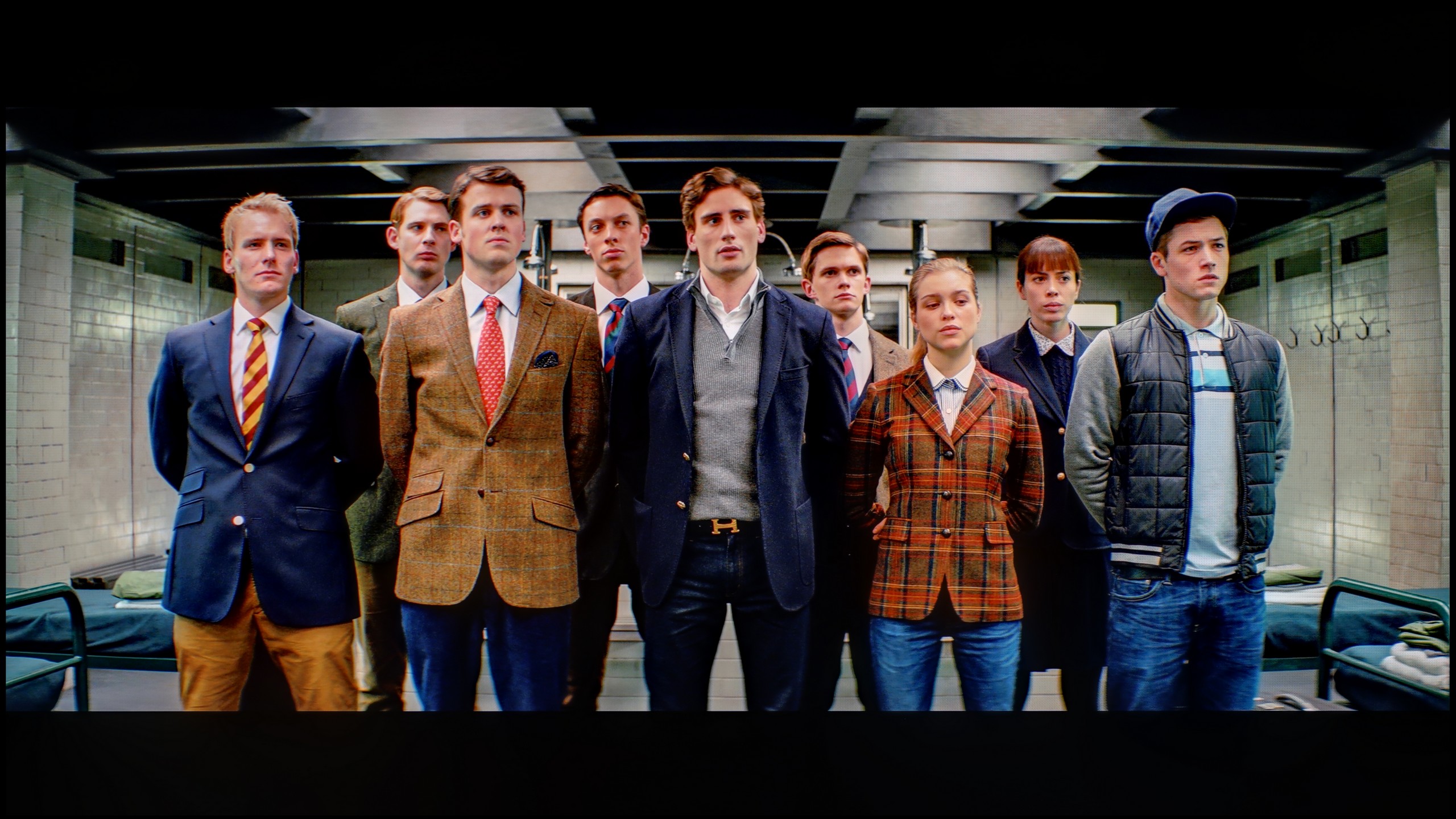

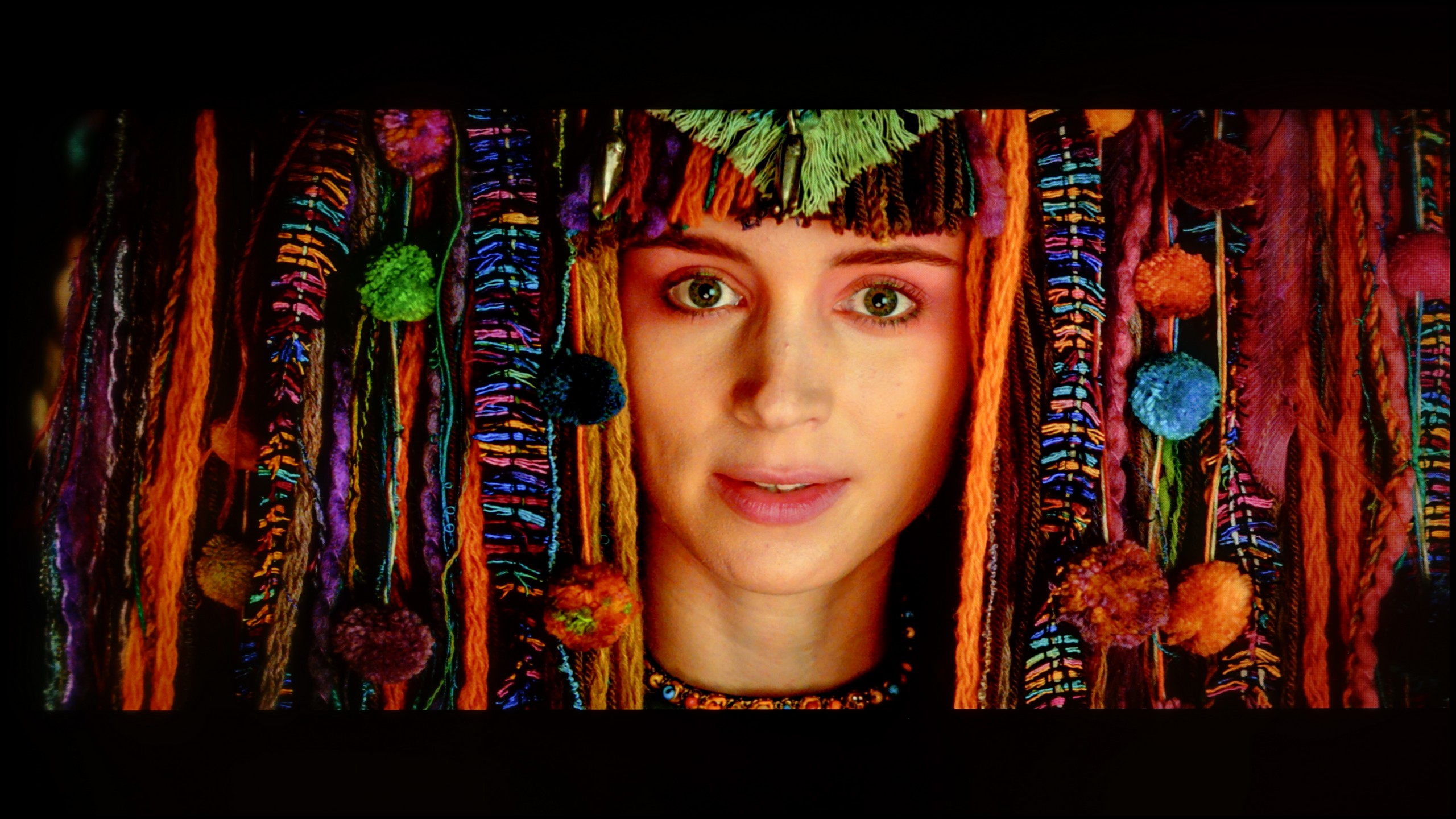

We have to admit that we didn't have much work with the LG B5. It's one of those TVs that look good right from the start, but after calibration… they can really impress. The white balance was nearly perfect – down to a level of errors invisible to the human eye, unless you're a professional colourist with a magnifying glass at the screen. We also managed to control the TV's tendency to slightly dim the darkest details, especially in HDR scenes. After proper tuning, everything looks cohesive: blacks remain deep but don't swallow information. Highlights maintain a natural sparkle, and colours are true to the director's vision. This is truly one of those models that show you don't have to spend a fortune to have an almost reference-quality image. If you can opt for professional calibration – it's definitely worth it for the B5.
What was saved in the QNED86A6A is undoubtedly the colours. After calibration, the white balance was set with great precision, ensuring that deviations on the Colour Checker palette mostly did not exceed the visibility threshold for the human eye. In other words – the colours finally looked natural, without strange yellow or orange tones that had previously marred the perception. Unfortunately, even the best calibration cannot overcome structural limitations. The already mentioned very modest number of local dimming zones and their unfortunate placement meant that the analysis of the EOTF curve in films still showed noticeable scene over-exposures. The image tended to flatten, lacking cinematic depth. Fortunately, this effect is not as visible in older productions or in SDR content. There, calibration really does its job and allows the QNED to be tamed so the image can be pleasing. However, the specifics of this construction – especially the contrast issues – cannot be completely bypassed.
Smoothness of tonal transitions
7.2/10
8.9/10
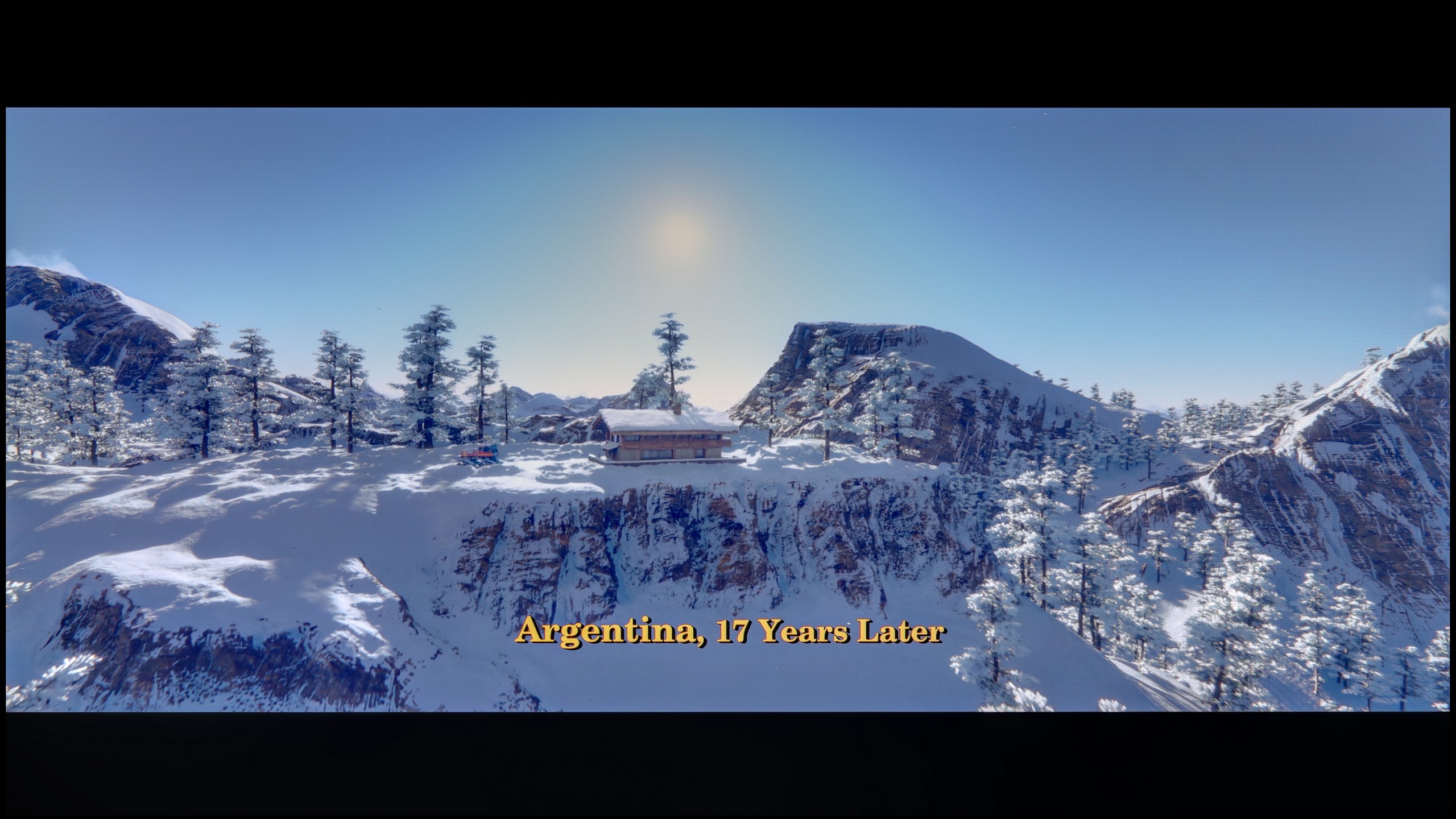

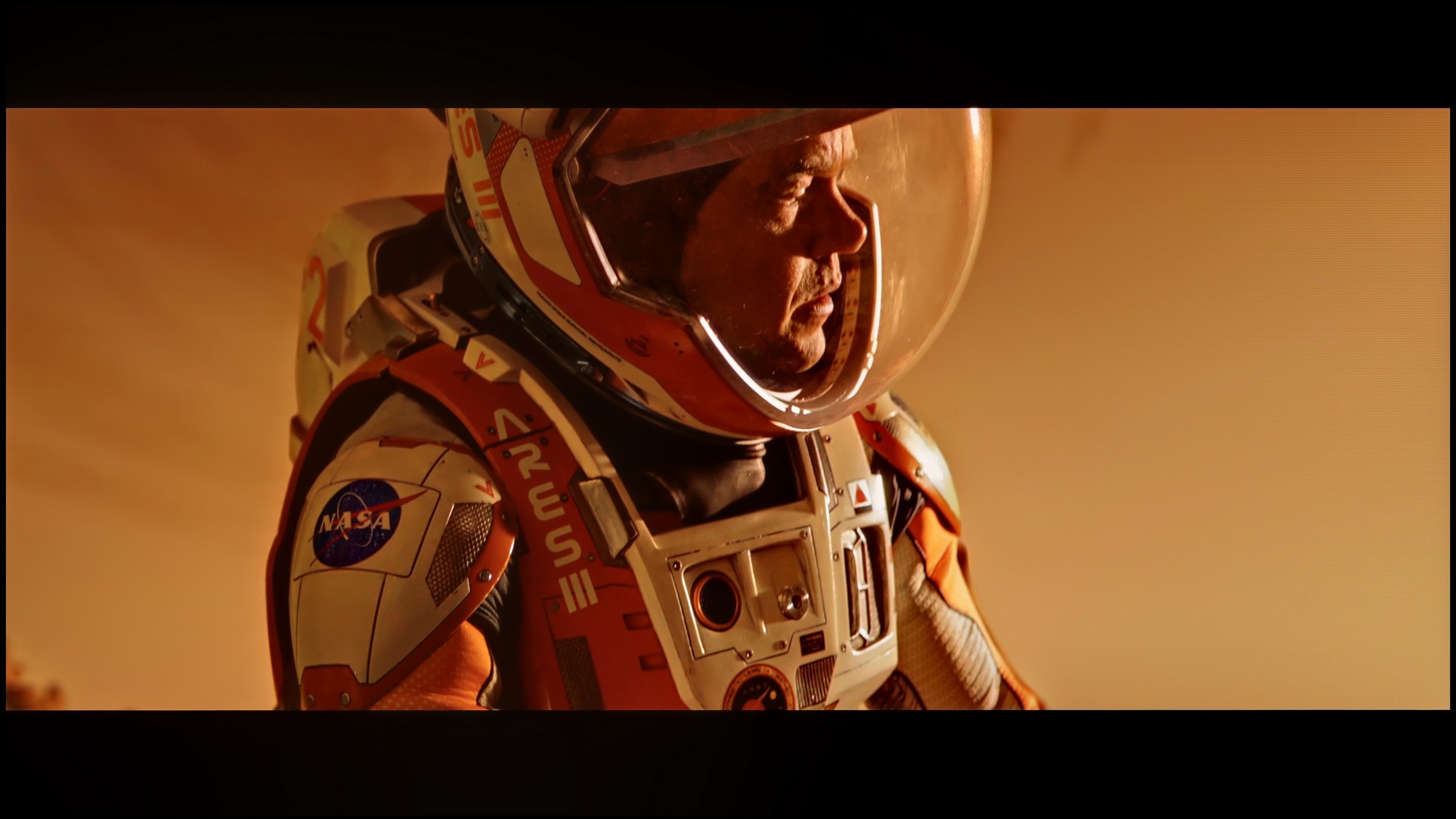

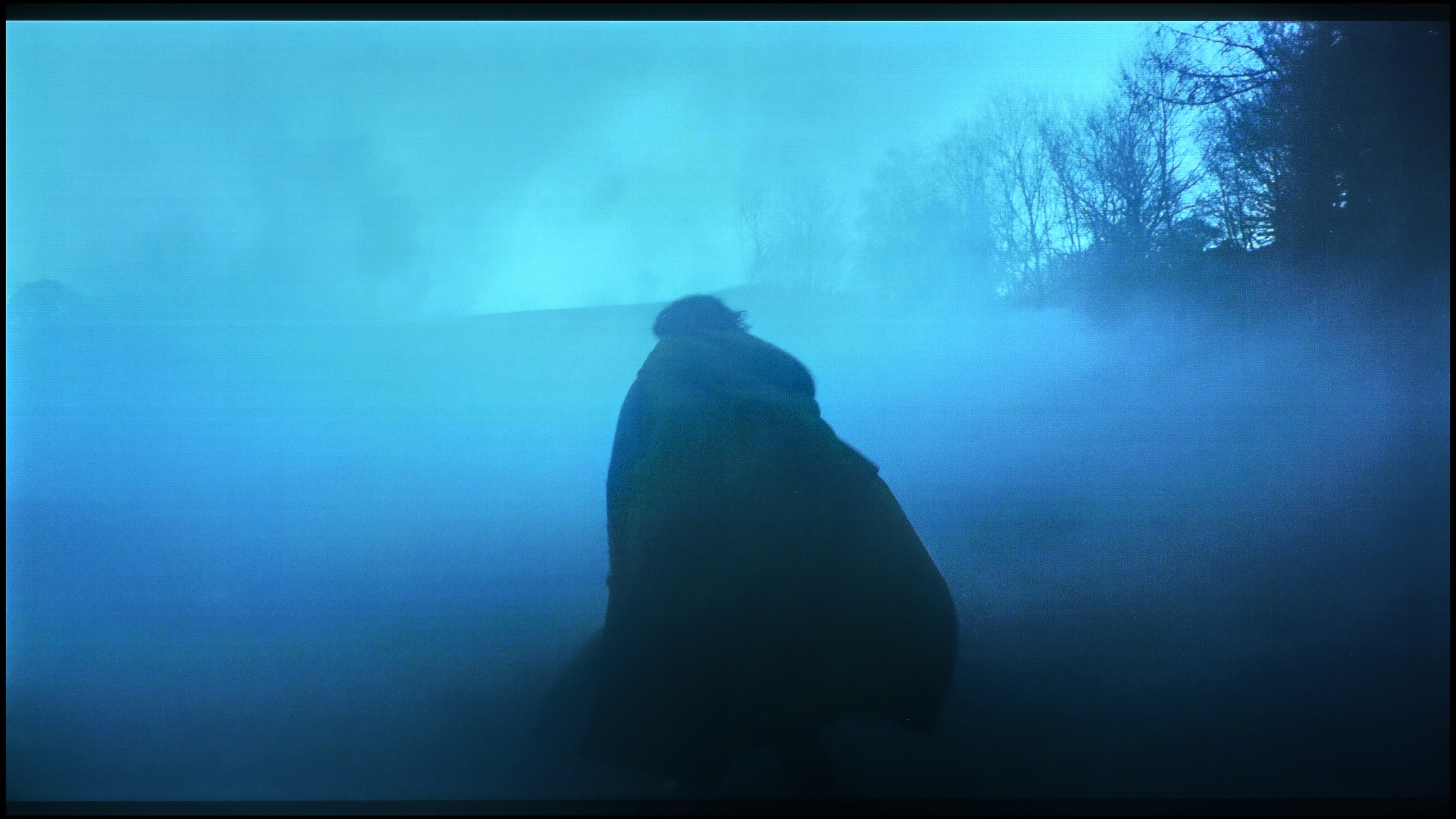

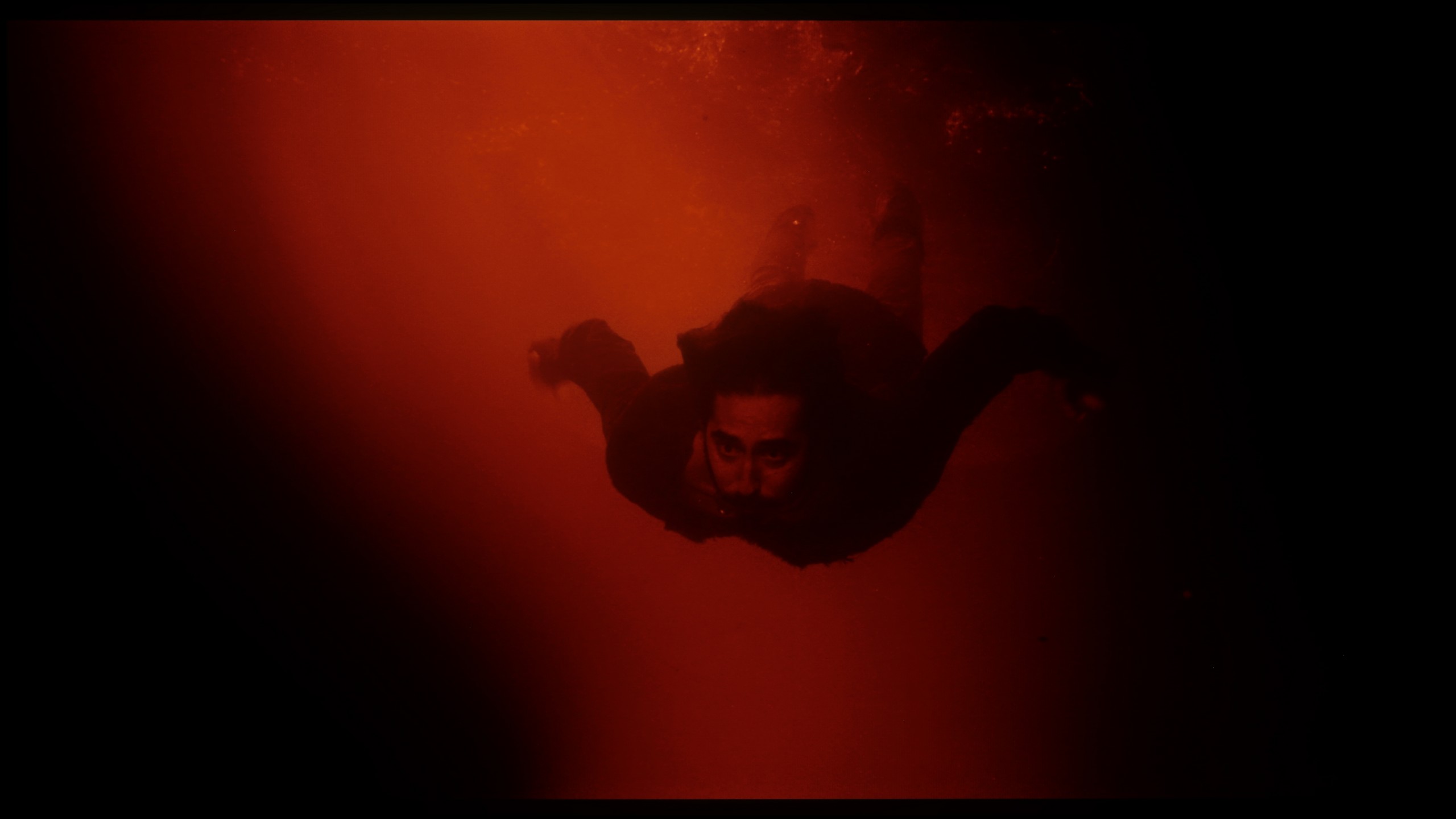





LG B5 handles colour gradation quite decently. In bright scenes, where we have smooth transitions between skin tones, the sky or background, the TV blends colours seamlessly and without hiccups. At first glance – it’s good, particularly considering the price. But just reach for more challenging material – those darker, more demanding scenes with a lot of subtle transitions – and the problems begin. Small artifacts appear, false contours, slight thickening. It’s still not at a level that blinds or distracts from the plot, but the difference compared to more expensive WOLED models – and even more so QD-OLED screens – becomes noticeable.
Colour gradation is one of the strong points of the QNED86A. In everyday viewing, the picture looks really smooth, without noticeable "steps" or sudden transitions between colours. The TV handles colour blending quite naturally, so with most content, it’s hard to spot any issues with gradation. Any imperfections only appear in extreme conditions – for example, in the darkest parts of films, where even much more expensive TVs can have problems. There, you might notice slight banding or characteristic stripes, but these are marginal situations that shouldn’t be a bother during regular use. Overall, the QNED86A performs well in this category and has nothing to be ashamed of compared to the competition.
Image scaling and smoothness of tonal transitions
7.5/10
7.8/10
Smooth transition function
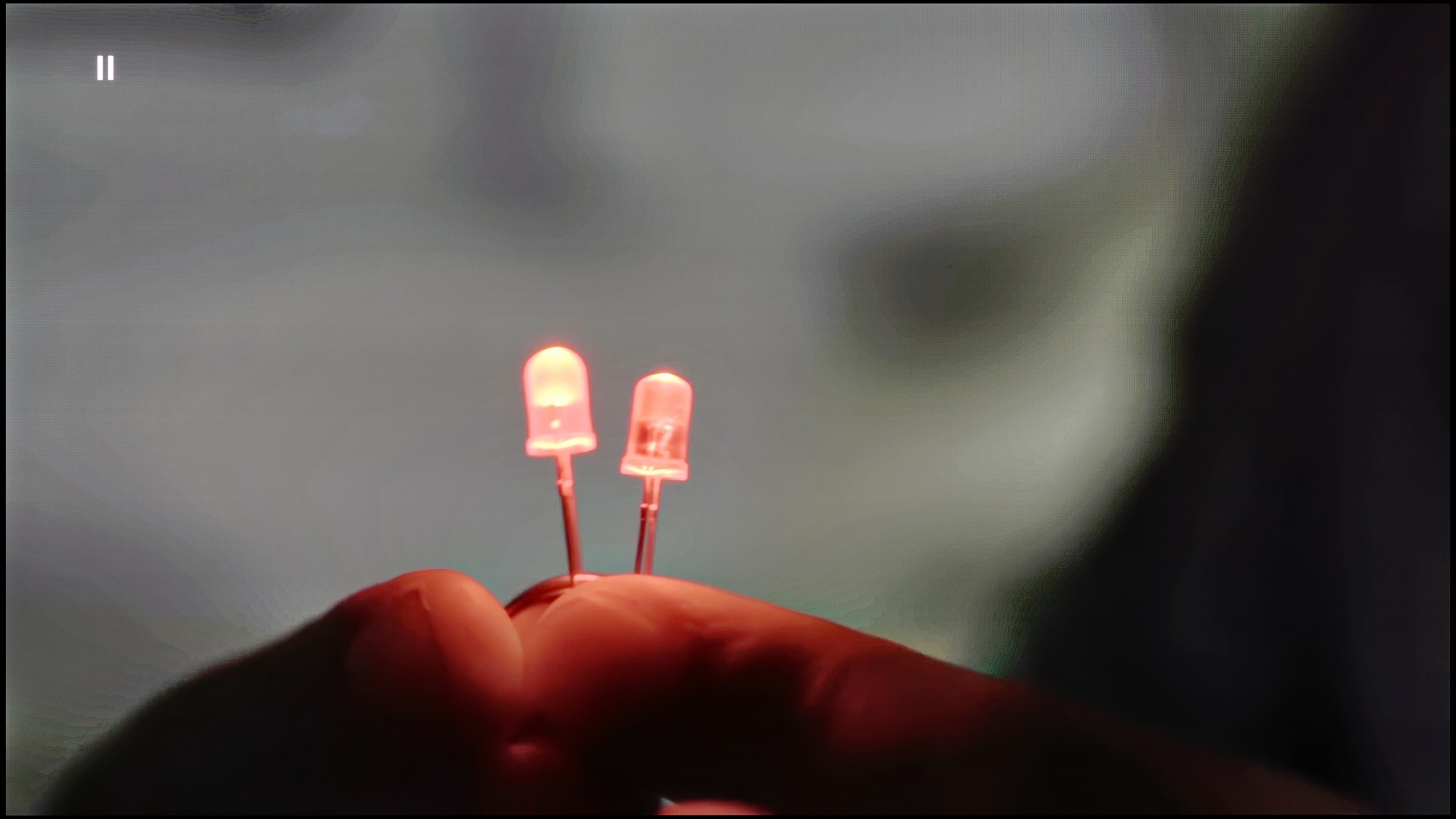

Image without overscan on the SD signal
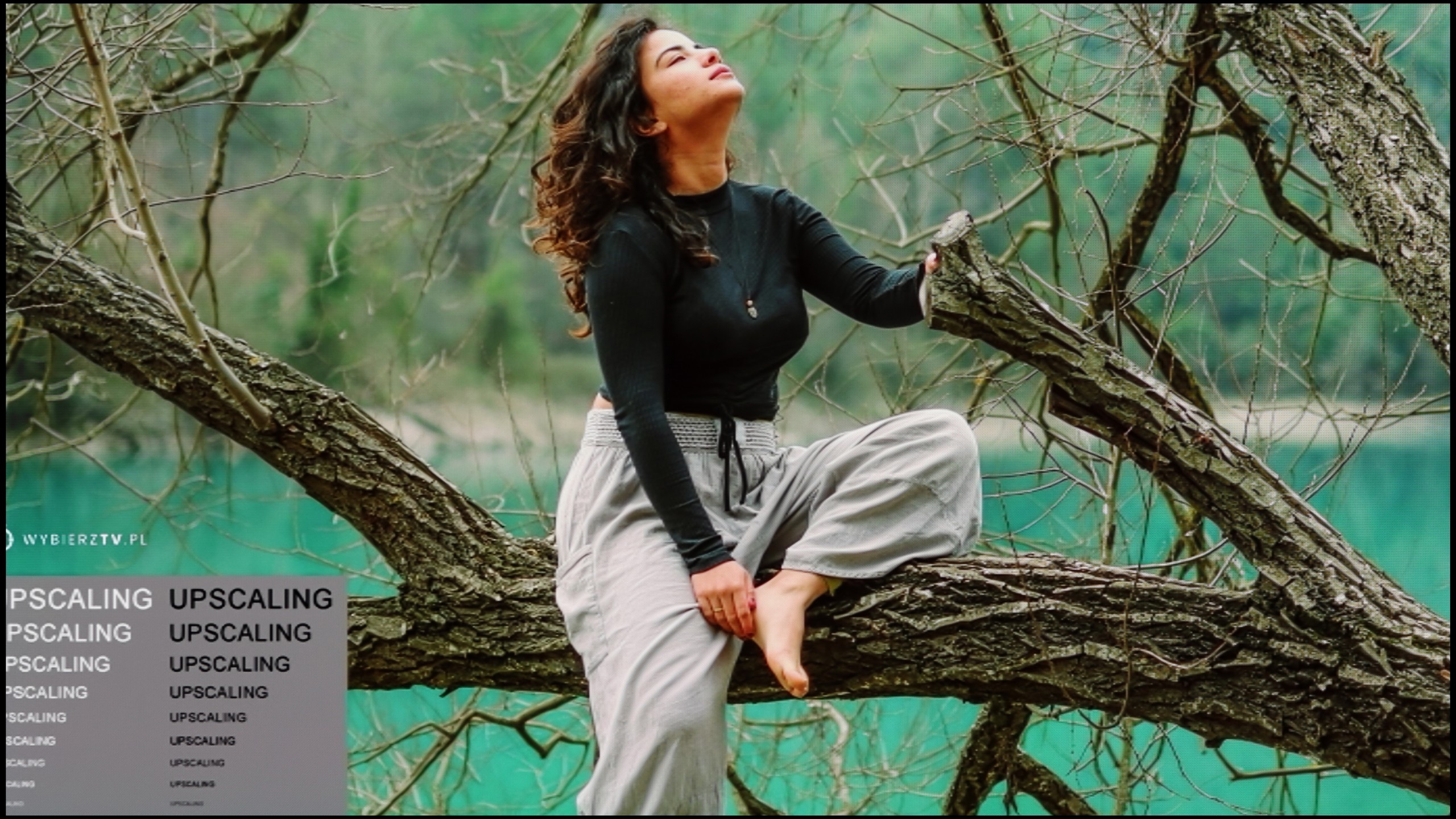

LG B5 really surprised us positively in terms of handling lower quality content. Thanks to the enhancement and smoothing features, HD or even SD materials come to life. Importantly – when this option is turned on at the "low" or "medium" level, we don’t get the impression that the image is artificially softened or overly smoothed. Details remain in place, film grain doesn’t disappear, and the edges of objects don’t look washed out 😉. It’s a really useful tool – especially if you’re watching free-to-air TV, archival materials, or content from YouTube in lower resolutions. The picture is clear, consistent, and simply pleasant to the eye.
Upgrading as such works very well – even low-quality content is reproduced with surprising fidelity. Unfortunately, it’s not without a minor hiccup. Although the menu has an option to turn off overscan, the television still has issues correctly displaying very low-resolution images. It’s a minor detail, but when watching older materials – it can be annoying.
If someone is worried about potential "steps" when blending colours, the QNED86A has a simple solution for that. Just turn on the feature called Smooth Gradation and set it to the medium level. Then the TV really smooths out all those unwanted transitions – especially in older productions – and it does so in a way that the film grain doesn’t disappear, nor do any strange artefacts appear. In other words, you can use it without any worries.
The upscaling itself also turns out quite well. Of course, there are no miracles here – with poorer quality sources, you can notice characteristic jagged edges. Fortunately, there is a sharpness slider in the menu, and if someone prefers a more "soft" image, it can be quickly adjusted to their own taste.
Blur and motion smoothness
8.5/10
7.9/10
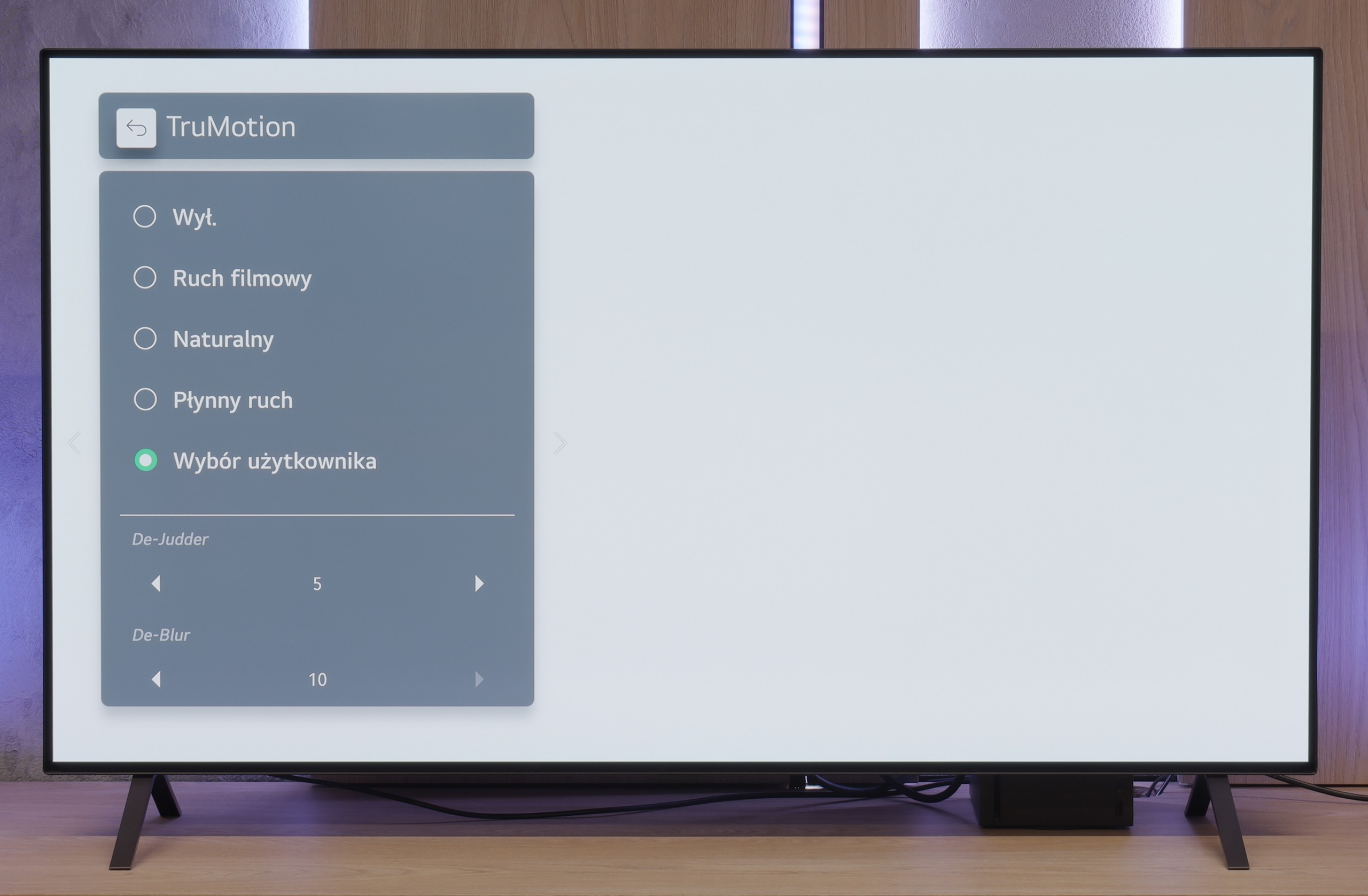

Blur (native resolution, maximum refresh rate):
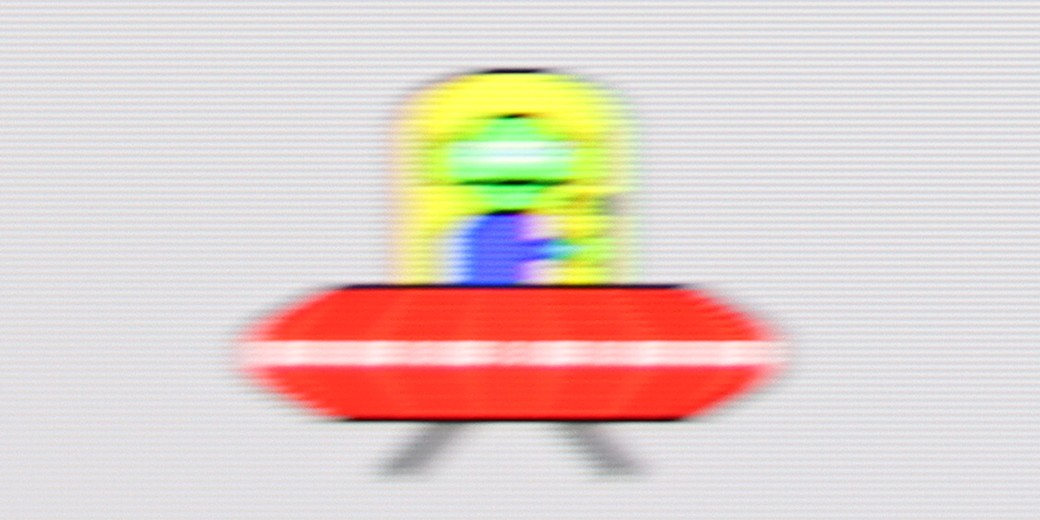
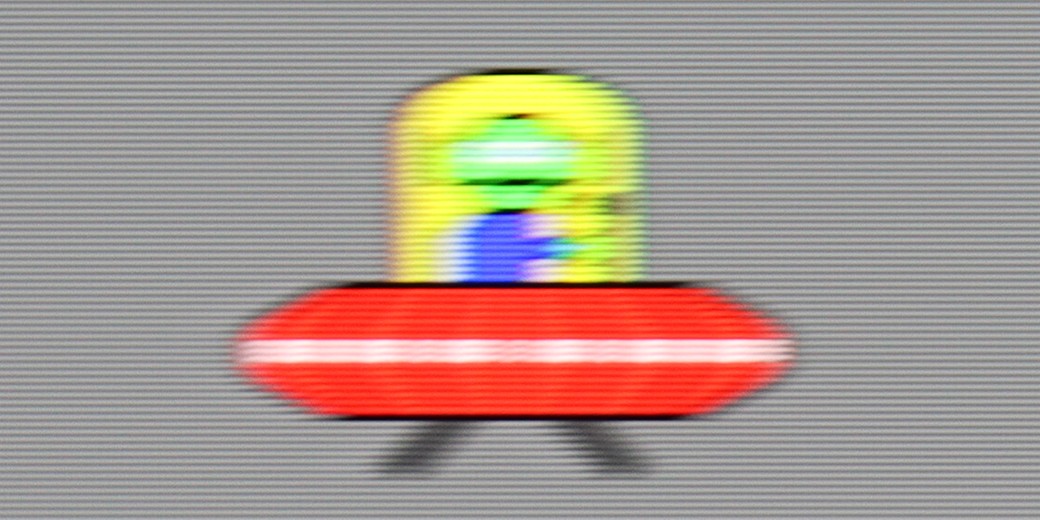
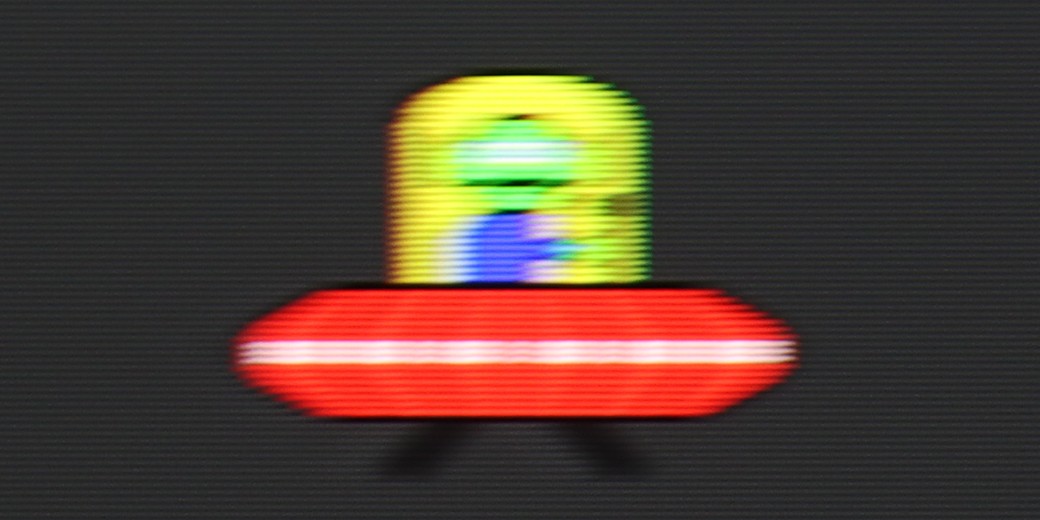



Blur (BFI function enabled):



LG B5 is a TV with a 120 Hz OLED panel. It may not sound as impressive as the marketing terms "144 Hz" or "165 Hz" commonly found in gaming monitors, but honestly? The smoothness is still excellent. The picture is sharp, fluid, and simply enjoyable to watch – even when there’s a lot happening on screen. The organic panel does its job – the pixel response time is almost instantaneous, which means there’s no risk of ghosting or blurring that can ruin dynamic shots. Sports, fast-paced games – everything looks clear and distinct.
We also have the classic LG motion smoother, TruMotion. It allows you to smooth out movies shot at 24 frames – in other words, most of what you watch on Netflix or from Blu-ray discs. If you set lower values on the “De-Judder” slider, you’ll get a picture closer to the cinematic experience – with a slight judder, but without artificiality. Higher settings? Soap opera effect guaranteed. Fortunately, LG gives you the choice, and you can tune everything to your liking.
QNED86A has been equipped with a 120 Hz refresh rate panel, so right from the start, it can be said to be suitable for both sports and gaming. And indeed it is – the picture looks smooth, and motion blur isn’t too much of an issue. IPS panels have always had a bit of a problem with this, and here too you can sometimes notice slight blurring, especially in very dynamic scenes, but it’s not something that ruins watching a match or a fast-paced game. For cinema and sports fans, LG has included the traditional TruMotion smoothing feature. In the menu, we have two sliders – one for movies (De-Judder), and the other for sports (De-Blur). The first adds missing frames and allows you to adjust the character of motion – from raw, cinematic to a more fluid, “theatrical” feel. The second improves sharpness during dynamic actions, so it’s worth turning it up a bit if you watch a lot of sports.
Console compatibility and gaming features
10/10
9.8/10
- ALLM
- VRR
- VRR range40 - 120Hz48 - 120Hz
- Dolby Vision Game Mode
- Correct implementation of HGIG
- 1080p@120Hz
- 1440p@120Hz
- 4K@120Hz
- Game bar
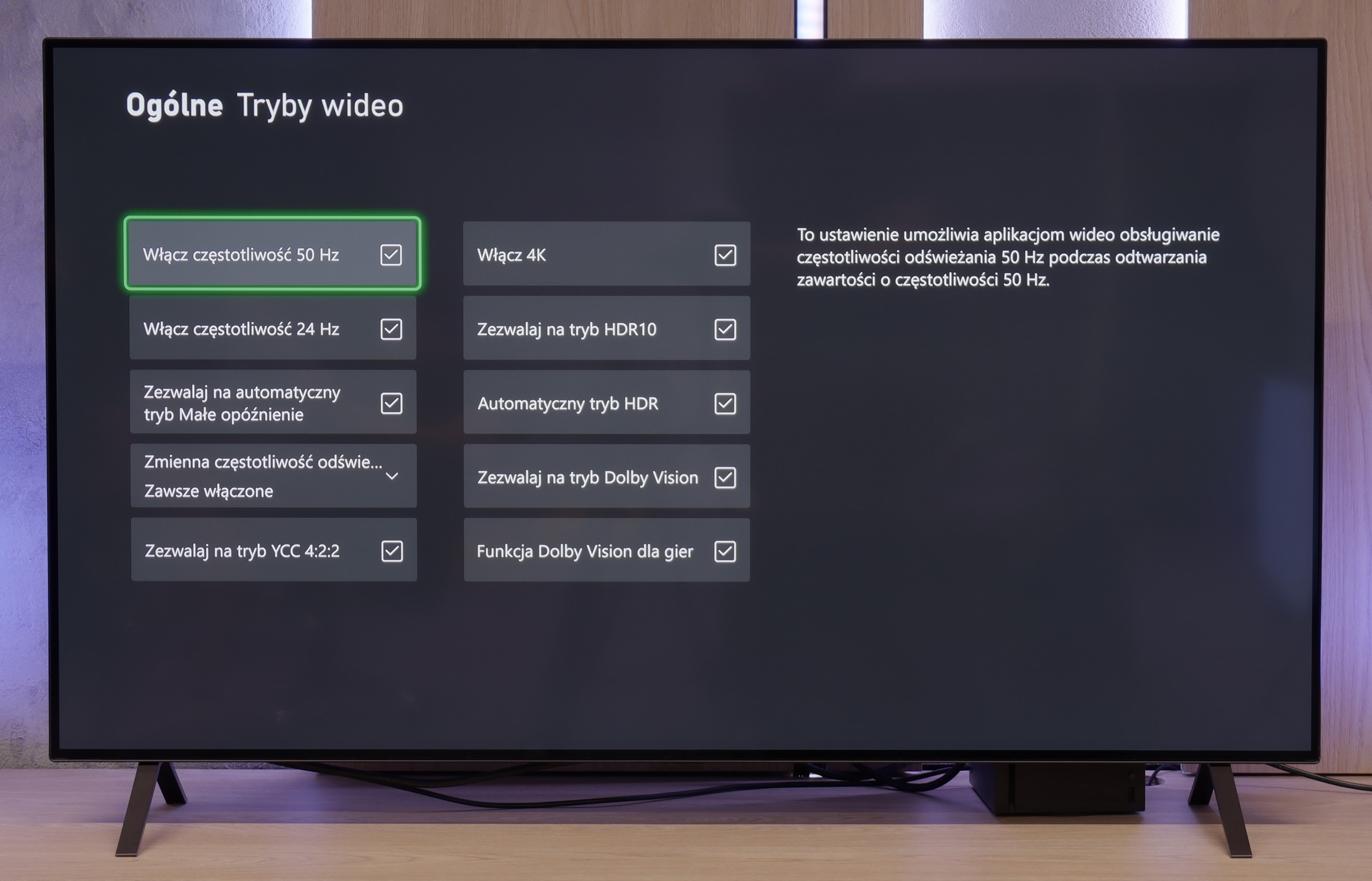

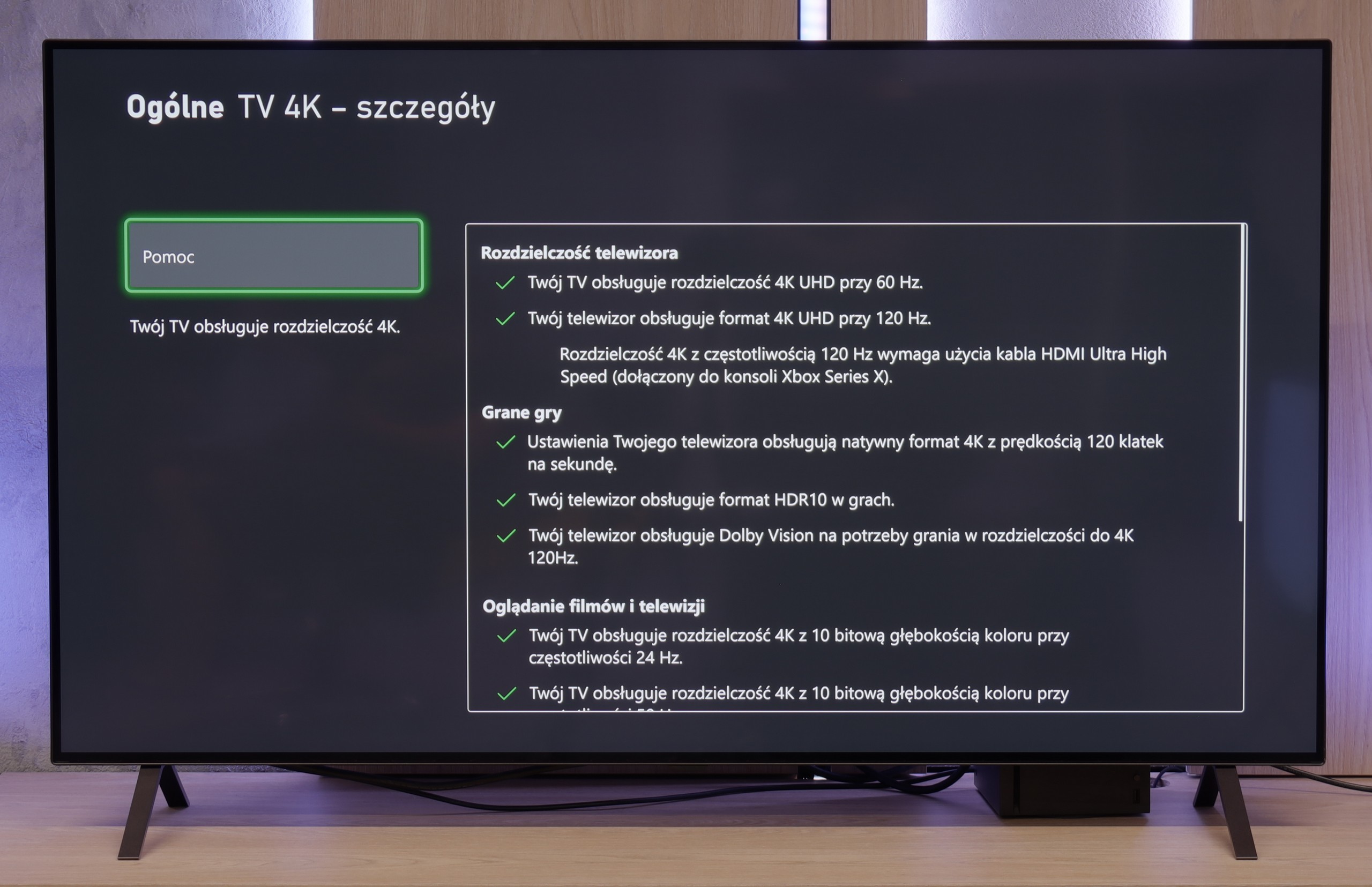

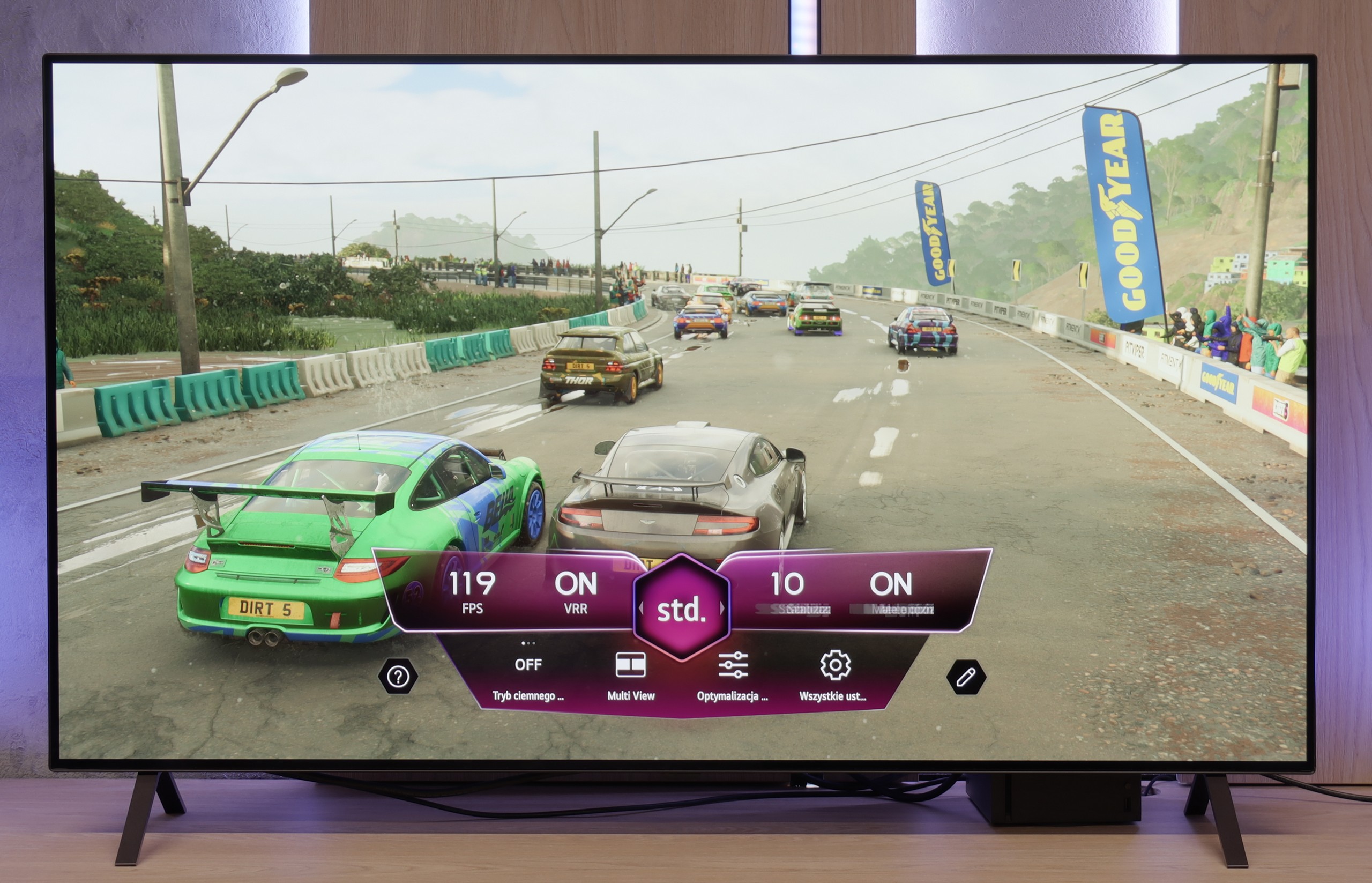

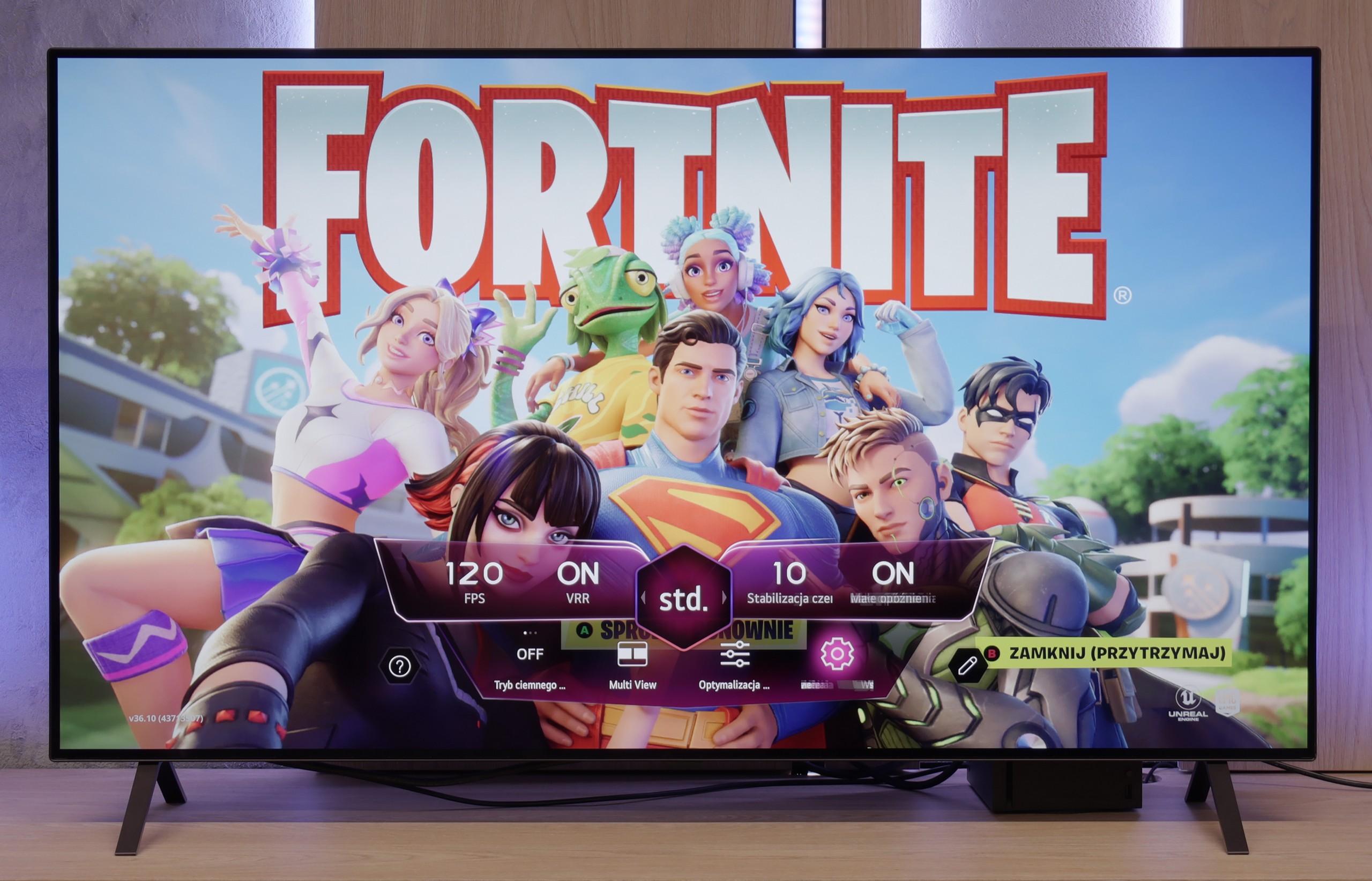

There are already a few TVs on the market with the "for gamers" label that don't really understand what that means. The LG B5 is not one of them. Everything here is spot on – there are four HDMI 2.1 ports, 120 Hz, there’s VRR and ALLM, and there’s also a Game Bar that's actually useful, not just looking good in the brochure. You plug in a console – it works. You set it to 4K at 120 Hz – it works. You have an Xbox and want to play in Dolby Vision – it works too. And it's not just "theoretically supports," it actually turns on, looks good, and you don't have to fiddle with settings for half an hour. Plus, there’s the HGiG picture mode, which LG has implemented correctly – meaning HDR in games doesn't turn the screen into a strobe light, but shows exactly what it should. There are no surprises, no strange limitations, no "buts." And you know what? That's how it should be. Cheers to the LG B5!
When it comes to gaming, the LG QNED86A6A is a complete tool. It features four HDMI 2.1 ports with a full bandwidth of 48 Gb/s, which means that whether you connect a PlayStation 5, an Xbox Series X, or a powerful PC – everything will work in full 4K at 120 Hz with support for all functions. This is a significant advantage, as some competitors still only feature two such ports, which can be troublesome when dealing with multiple devices. It also includes VRR, or variable refresh rate, which eliminates screen tearing, and ALLM, which automatically activates game mode when the console powers on. Dolby Vision Gaming is included as well, alongside proper implementation of the HGiG format, so titles that support these formats look livelier and more detailed. Additionally, there's the Game Optimizer – a kind of control centre for gamers. From this interface, you can view image parameters in real time, quickly switch modes, activate additional features, or adjust picture settings to your own preferences. The LG QNED86A6A has basically everything you would expect from a modern gaming television.
Input lag
9.9/10
9.9/10
SDR
HDR
Dolby Vision
Here we won’t be going on about it – the LG B5 simply has great input lag. For 60 Hz content, it achieves results below 10 ms, and for 120 Hz it even drops to around 5 ms. These are values that can’t be reasonably criticized. It just works instantly, without delays, without surprises. Well... almost. Because as usual, there’s a slight asterisk with the Dolby Vision Gaming mode. In this mode, the response time slightly increases. It's nothing dramatic – they’re still very low values, likely unnoticeable while gaming – but if you’re only playing tournament titles and fighting for every millisecond on your XBOX, it’s worth keeping in mind.
There’s really nothing to complain about here. The QNED86A6A achieves excellent results – around 5 ms with 120 Hz content and about 15 ms with 60 Hz. These values will comfortably satisfy both console gamers and those who connect a PC to the TV. The response to movements is instantaneous, so you can forget about delays between the image and the action on the pad.
Compatibility with PC
7.6/10
8/10
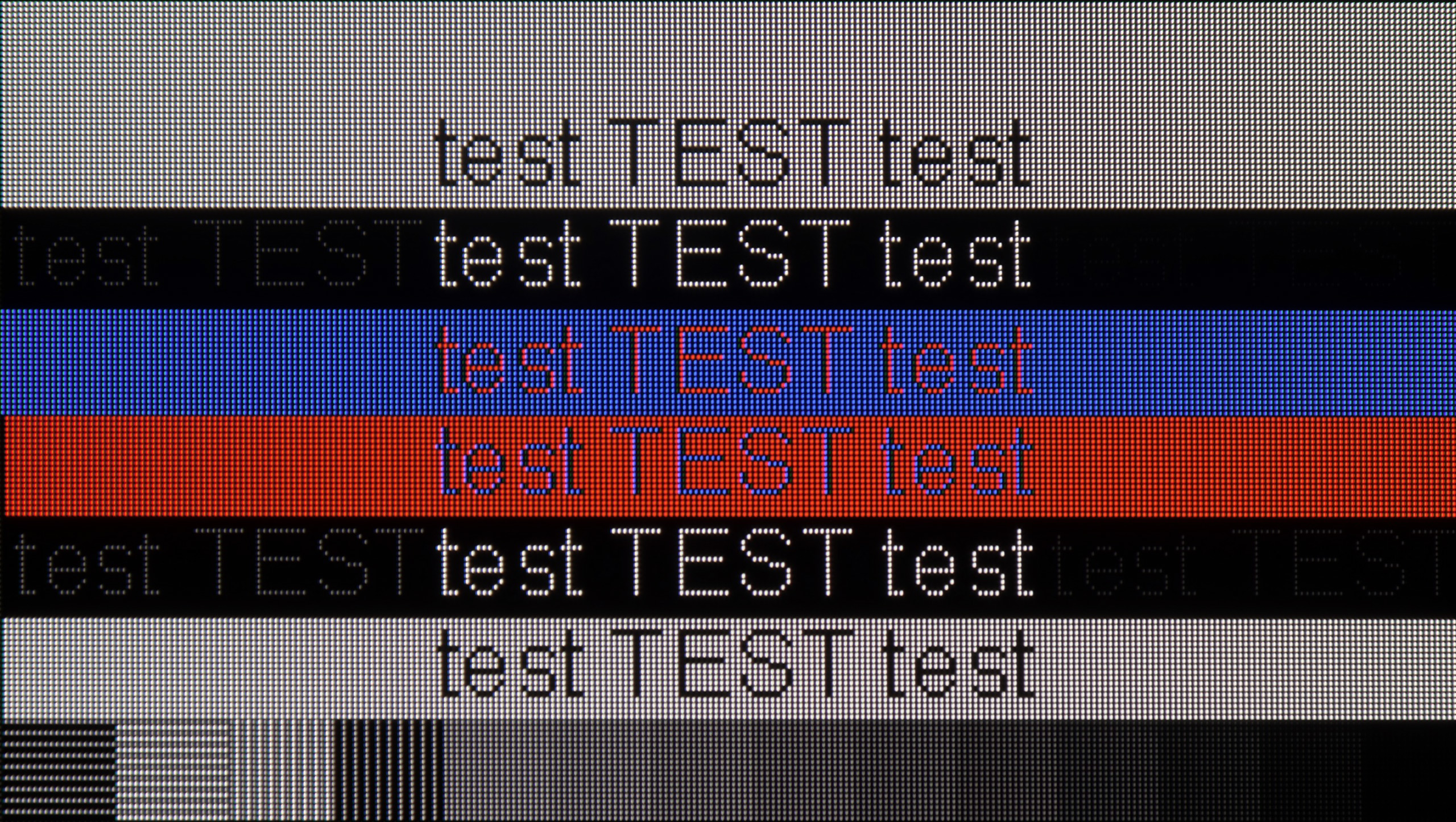

LG B5 is a television that communicates well with a computer. You won't find gaming features like 144 or 165 Hz here, but is that really necessary for anyone? Thanks to the 120 Hz panel, low input lag, and G-Sync support, it's actually a very good screen for gaming on PC. No stuttering, no tearing, with instant response.
But it's not just for gaming. The B5 can also be quite comfortable for... simply working. The television correctly supports chroma 4:4:4, so fonts are legible, interfaces are clear, and your eyes won't hurt from blurry text. This isn't obvious, even among more expensive models. However, there is one "but" – and this applies not only to the B5, but to every OLED with a WOLED panel. The RWGB subpixel arrangement can cause a slight shadow at the edges of fonts. This isn't something that stands out from the couch. It's more likely to be noticed by someone sitting close to the screen and spending half a day in Excel.
LG QNED86A, with its IPS panel, full RGB subpixel layout, and proper implementation of chroma 4:4:4, makes text look fantastic on the QNED86A6A. The text is sharp, clear, and readable, making the TV ideal for office work. This is important as this year the model also debuts in a 43" size, which can easily sit on a desk and serve as a large monitor. Of course, some users opting for the 43" will be gamers, and here too there are no complaints. The TV supports 4K at 120 Hz, so gameplay is smooth and enjoyable. It's a bit of a shame that there wasn't a mode with a higher refresh rate, such as the 144Hz claimed by the manufacturer, as PC gamers would definitely appreciate that. Despite this, the QNED86A6A performs really well as a monitor for gaming and work.
Viewing angles
7.4/10
6.9/10
In terms of viewing angles, the LG B5 performs very well – exactly as you would expect from a WOLED panel. No matter from which side you sit, the picture retains its quality. Colours don't fade, contrast doesn't drop off sharply, and details remain clearly visible. However, it must be honestly added that this is not the level of QD-OLEDs from Samsung Display. Those manage to hold colour saturation even better under extreme angles. But if you don't plan on watching films while sitting at a 90-degree angle – the B5 is more than sufficient. It's one of those TVs that is just pleasing to look at – from any side.
QNED86A6A performs very well in this regard. The IPS panel used here ensures that the image retains its brightness and colour saturation even when viewed at an angle. There is no fading effect here, which often occurs in cheaper TVs with VA panels. Of course – it’s not worth comparing it to the level offered by organic panels, where colours and contrast hold perfectly at almost any angle. But as far as LCD TVs go, this is definitely one of the better results and is more than sufficient for watching movies or sports together on the couch with a larger group.
TV efficiency during daytime
4.9/10
5.8/10
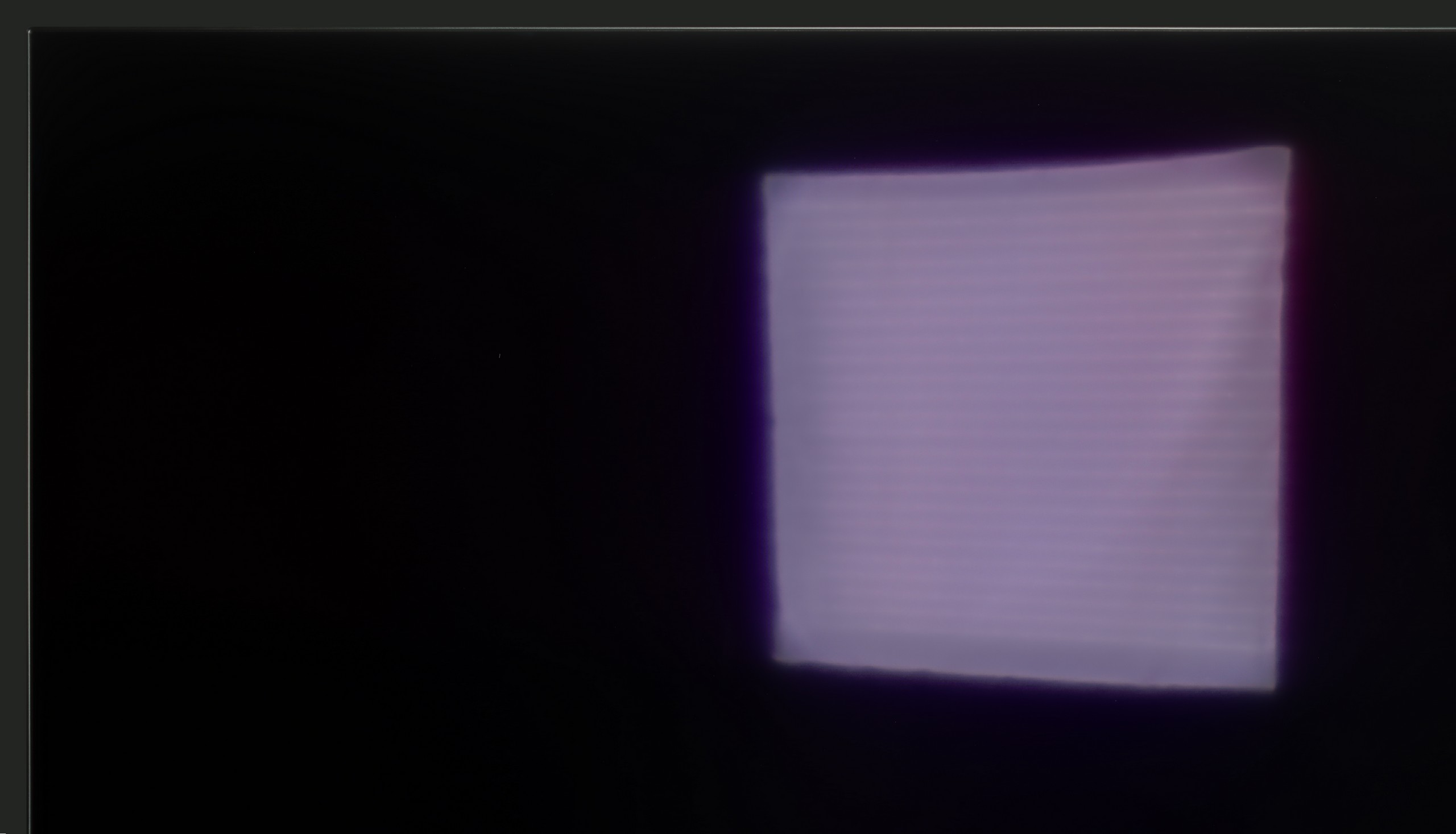

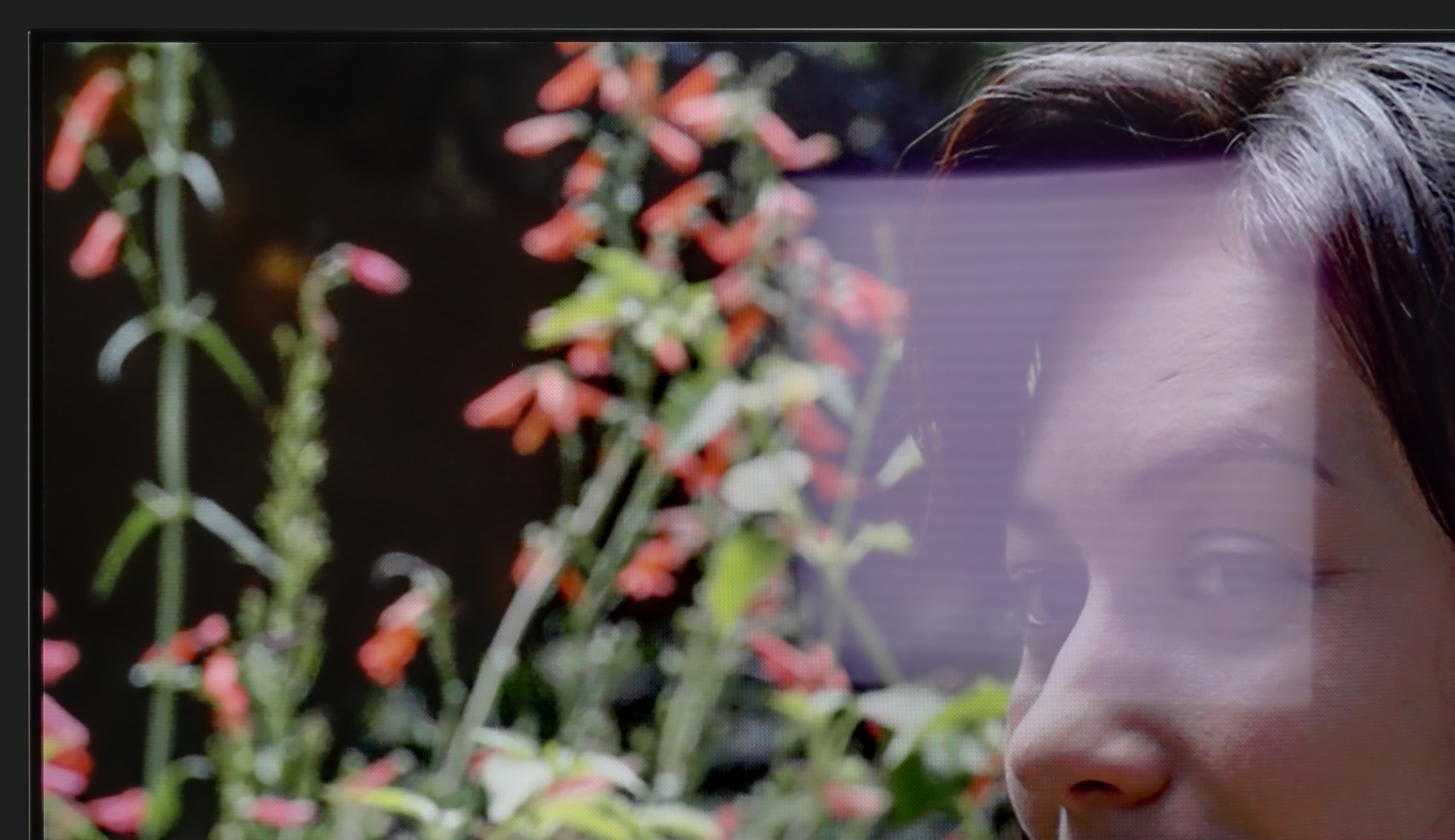

Matrix brightness
Average luminance SDR
LG QNED86A / QNED85A / QNED87A: 462 cd/m2
LG OLED B5: 279 cd/m2
The LG B5 is a television that feels best after dark. But when the sun comes in, it becomes a bit of a challenge. The brightness of this model is rather average, and the anti-reflective layer… also average. There are no special coatings here that deal well with reflections or very bright daylight. So if you're planning to place this television opposite a large, uncovered window – it may simply be hard to see anything.
Fortunately, there is something worth praising: the glossy WOLED panel maintains good colour saturation. Even in difficult conditions, the image doesn't fade or become "washed out," as can happen with some television models. In general, it's watchable, but if you're looking for a television specifically "for a bright lounge room," the B5 shouldn't be your first choice.
QNED86A6A is not a master of brightness, but it manages adequately. Thanks to the moderately high brightness of the panel and quite decent glare reduction, the TV performs well in typical, moderately lit living rooms. The picture remains clear, and the colours do not lose their intensity in daylight. However, let's not kid ourselves, this is not a screen that will handle extremely bright conditions, where sunlight floods in through large windows and strongly saturates the room.
Details about the matrix
Subpixel Structure:
Panel uniformity and thermal imaging:
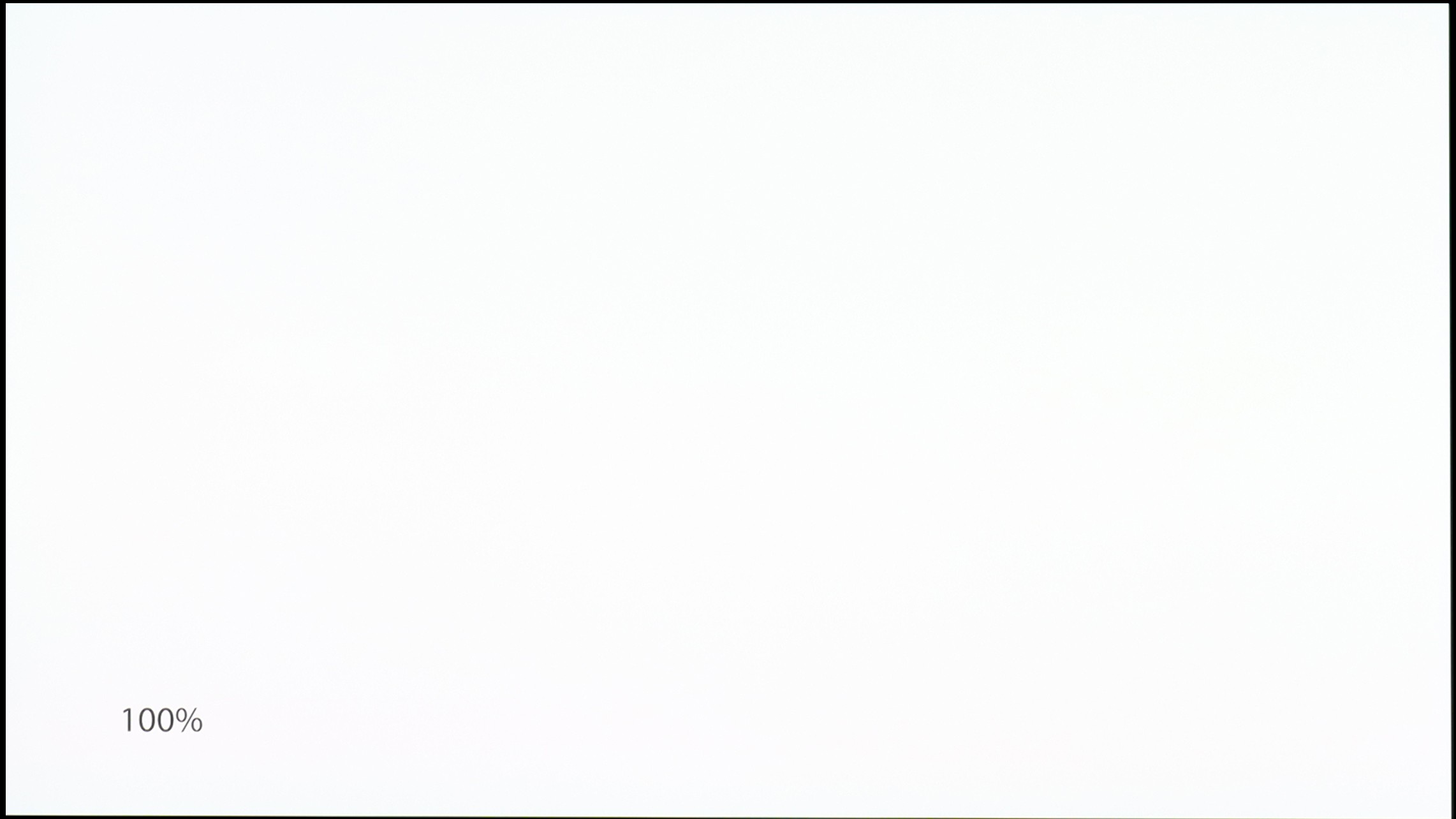

TV features
7.9/10
8.4/10
- HDMI inputs0 x HDMI 2.0, 4 x HDMI 2.1 48Gbps0 x HDMI 2.0, 4 x HDMI 2.1 48Gbps
- OutputsToslink (Optical audio), eARC (HDMI), ARC (HDMI)Toslink (Optical audio), eARC (HDMI), ARC (HDMI)
- Network InterfacesWi-Fi 2.4GHz, Wi-Fi 5GHz, Ethernet (LAN) 100MbpsWi-Fi 2.4GHz, Wi-Fi 5GHz, Ethernet (LAN) 100Mbps
- TV receptionDVB-T, DVB-T2, DVB-S, DVB-S2, DVB-CDVB-T, DVB-T2, DVB-S, DVB-S2, DVB-C
Classic features:
- Recording to USB (terrestrial TV)
- Recording programming
- Picture in Picture (PiP)
- RF remote control (no need to aim at the screen)
- Backlit remote control
- Teletext
- Audio only mode
- Bluetooth headphones support
- Simultaneous Bluetooth headphones & TV audio
Smart features:
- AirPlay
- Screen mirroring (Windows Miracast)
- Voice search
- Voice search in native language
- Ability to connect a keyboard and mouse
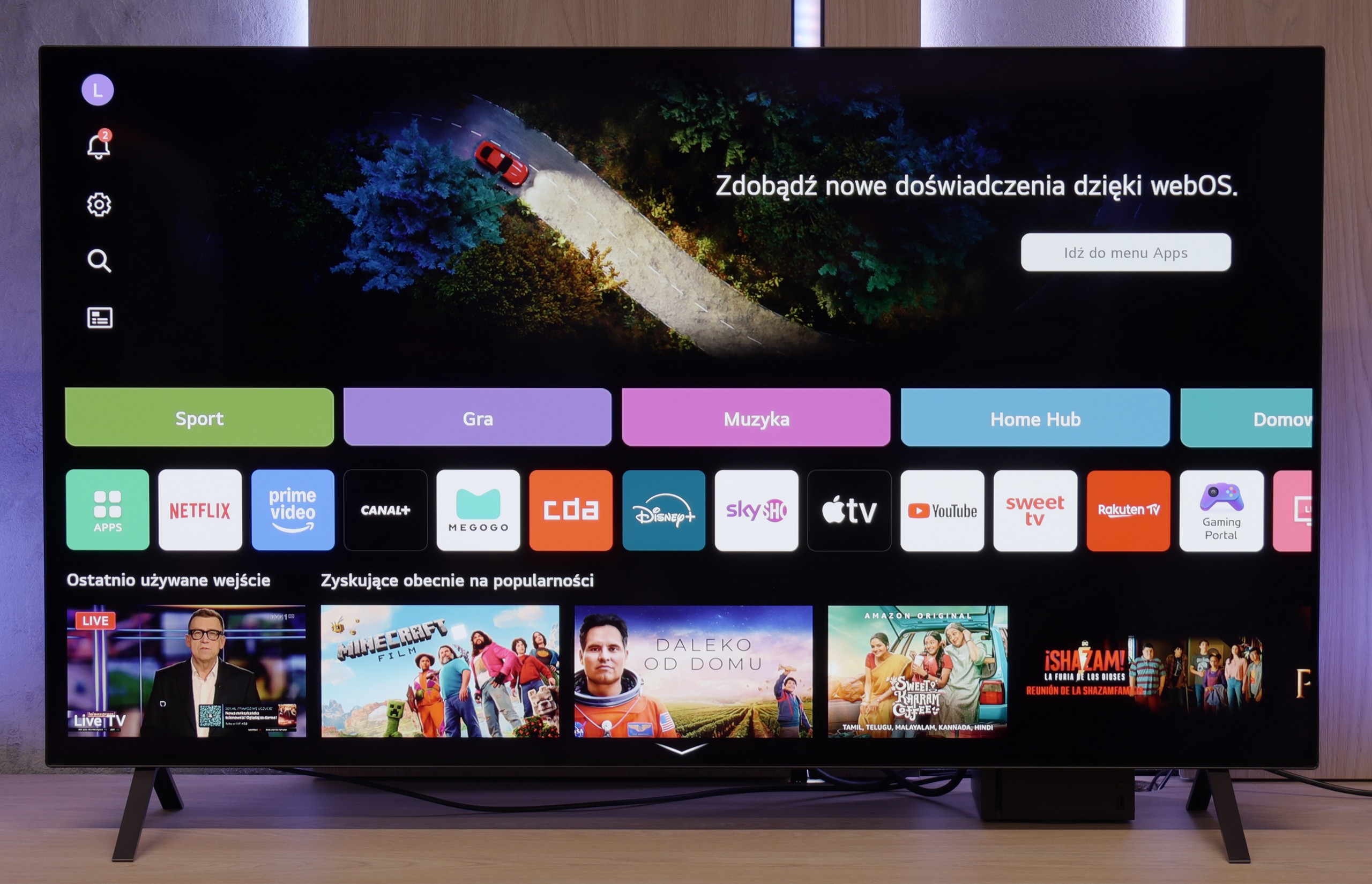
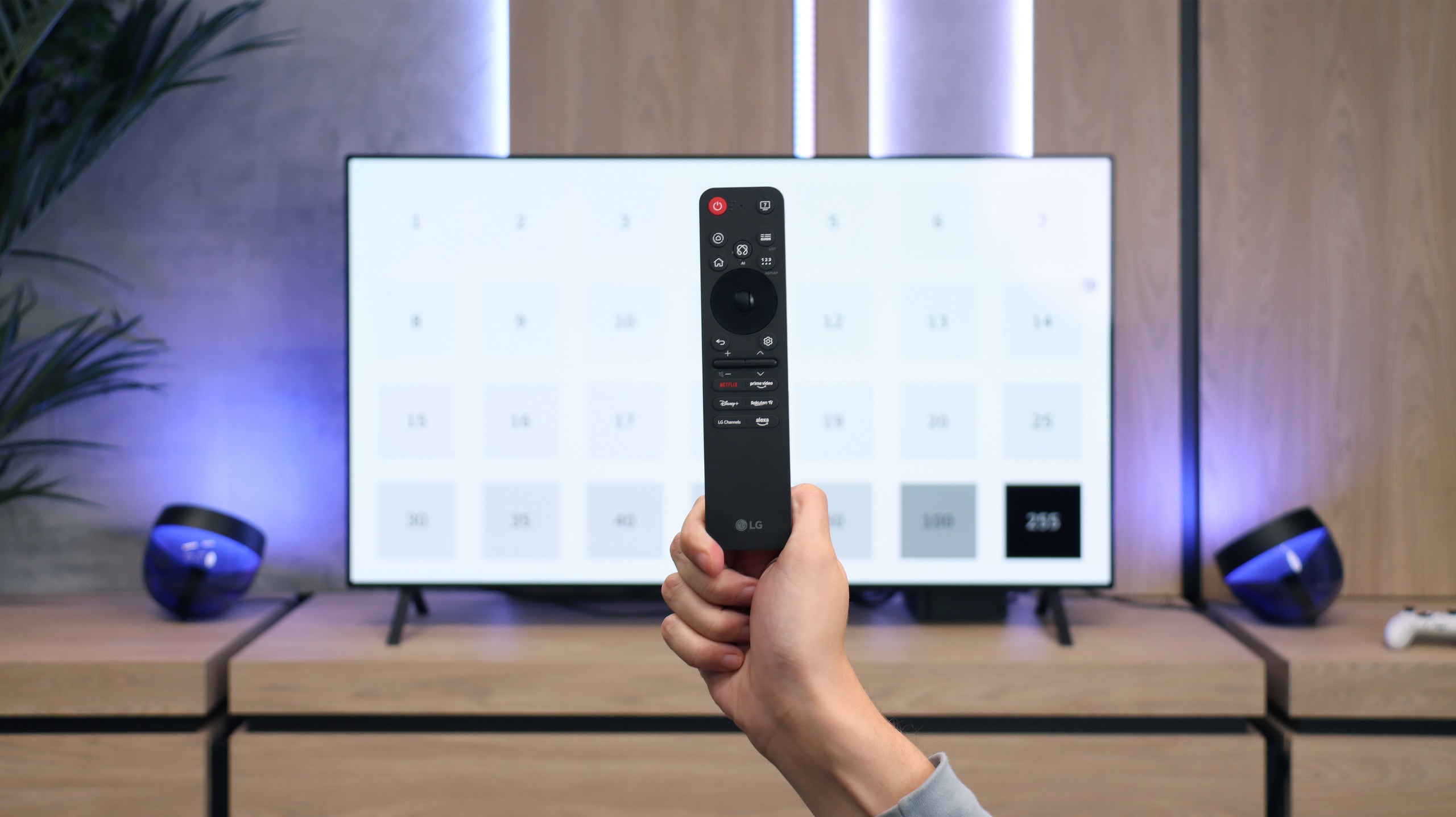
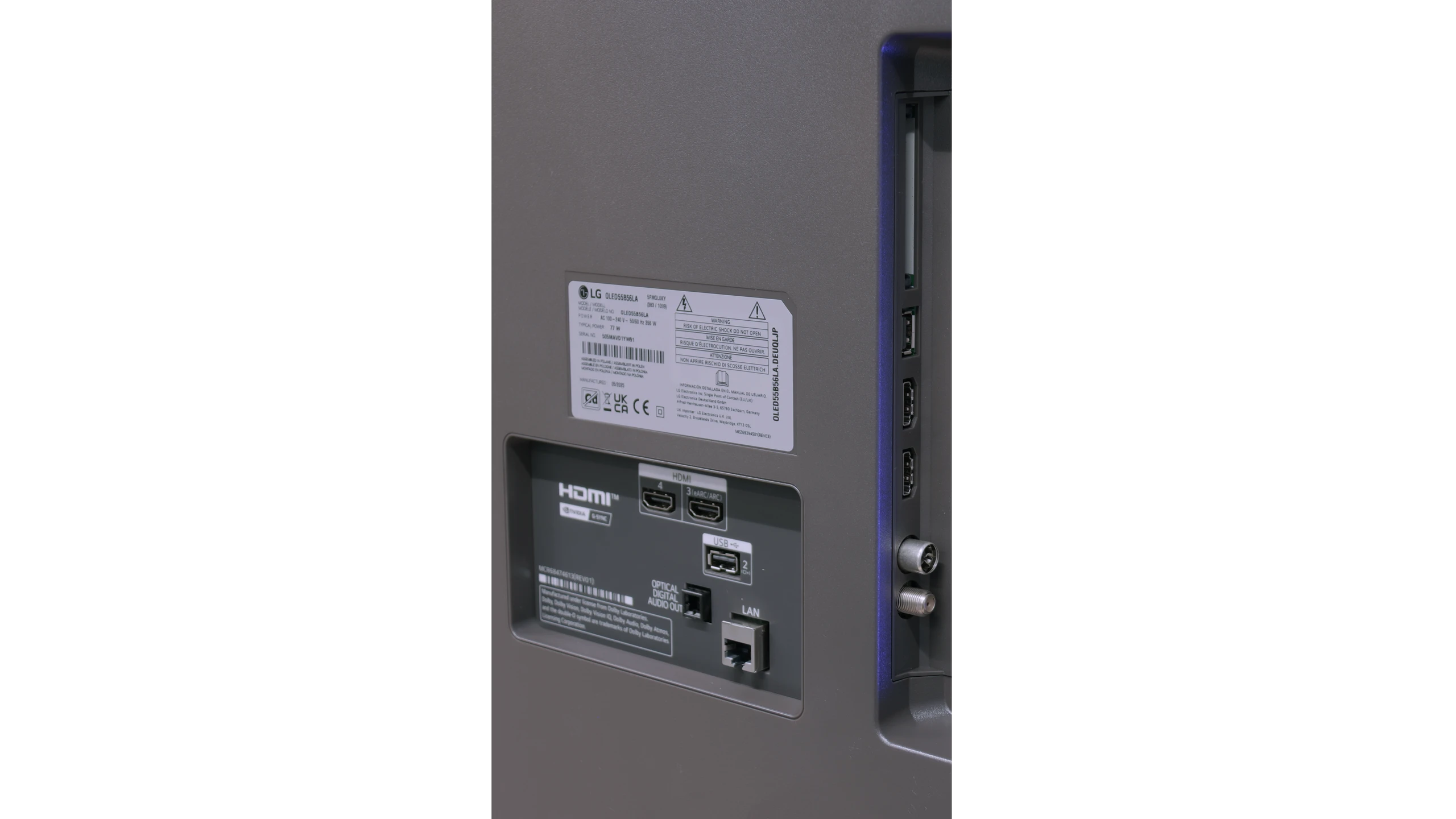




Functional Features
Even though the LG B5 is modern equipment, it hasn’t forgotten those who simply want to... watch television. No apps, no accounts, no logging in anywhere. We have built-in DVB-T2 tuners and the ability to record onto USB, with a clear and fast EPG guide. Is that not enough? There’s even a working teletext – for many, surely a relic, for others, a daily occurrence. A plus is also the option to turn off the picture and just keep the sound, which works great for listening to music. And if you want to watch quietly – you can easily pair Bluetooth headphones, without wrestling with settings and without delays. Everything works as it should.
SMART TV: webOS
The biggest distinguishing feature of the webOS system – still! – remains the way you control it. The Magic remote, which we get with the LG B5 (in our version B56 – the one without the numeric keypad), works like a magic wand. We point, click, select. And it simply... works. Intuitively, quickly, and without unnecessary clicking left and right. Added to this is the AI voice assistant – quite efficient. You can summon it directly from the remote and use your voice to search for content, change settings or switch sources. WebOS may not be the most "modern" system on the market, and built-in ads can be annoying, but when it comes to ease of use – especially with the Magic remote – it still stays one step ahead of the competition.
Smart Features: webOS
QNED86A6A runs on the well-known webOS – a system that has been a strong point of LG TVs for years. Everything operates quickly and smoothly, applications launch without significant delays, although the interface can sometimes feel a bit overloaded with ads. Fortunately, day to day, the convenience outweighs the shortcomings. A significant advantage is the Magic Remote, which allows you to control the cursor like a mouse – it's one of those solutions that you quickly get used to and later find hard to give up. In the new version, the remote is slimmer, as it has been stripped of the numeric keypad. Some will appreciate the simplicity, while others will miss the classic set of buttons; it’s more a matter of habit.
Classic Features
On board, we also find some solutions that in 2025 are not always obvious. There is the option to record programs from the built-in DVB-T2 tuners to USB, so you can easily return to a match or series at any time. In the evening, Bluetooth headphone support is handy – especially if someone in the house falls asleep quicker than we do. Additionally, there’s a full set of HDMI 2.1 ports with eARC support and audio formats such as Dolby Digital or Dolby Atmos.
Playing files from USB
8.6/10
8.9/10
Supported photo formats:
Maximum photo resolution:
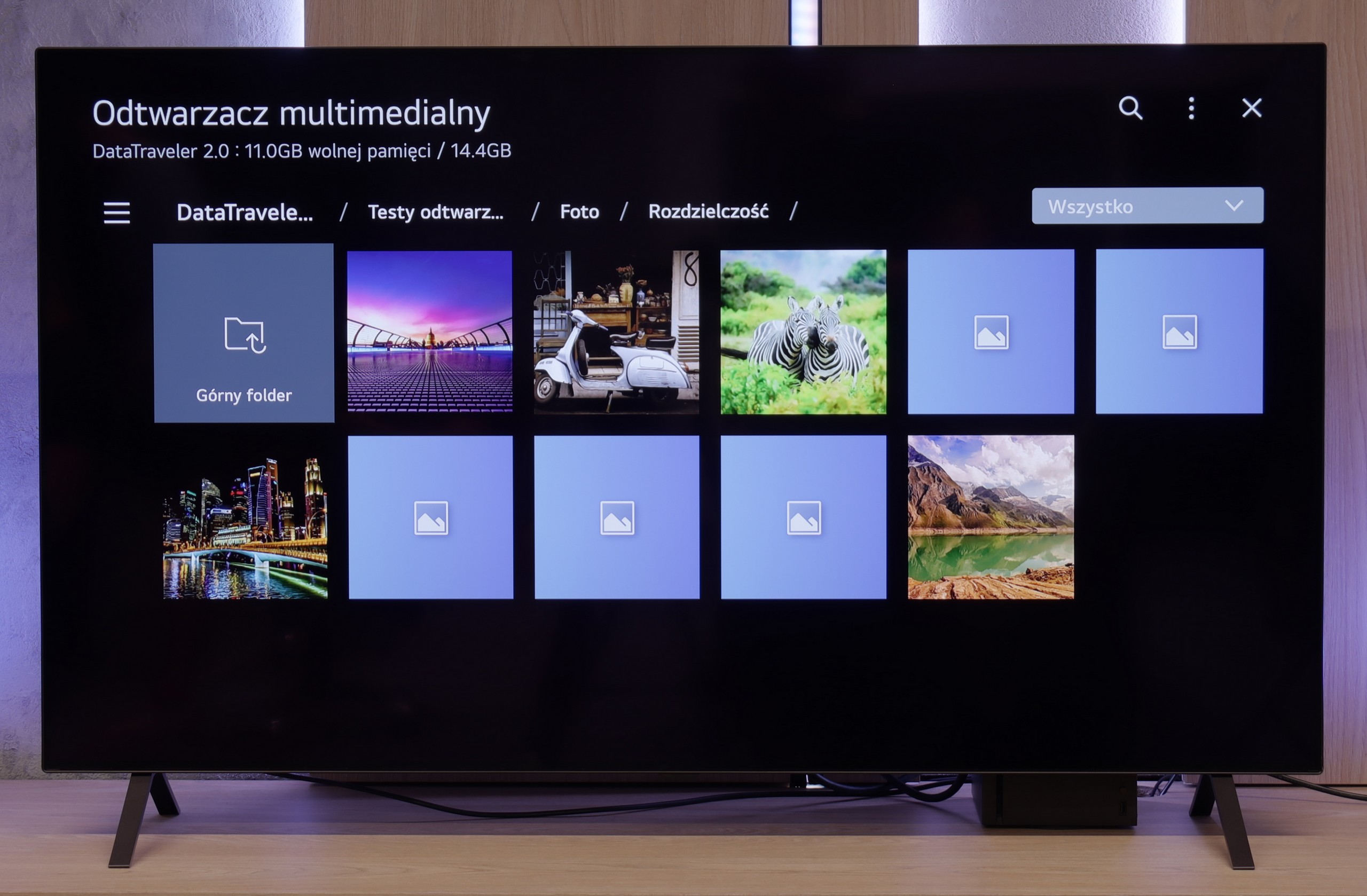

LG B5 handles USB files as it should. Most popular formats work seamlessly, and subtitles – even with Polish characters – are displayed correctly. You can comfortably play a movie from a USB drive or have a weekend slideshow of your holiday photos without worrying that something will go wrong. However, there was a surprise with files in HEIC format – that is, photos saved by Apple devices. While the LG C5 had no issues with them, the B5 stubbornly refused to cooperate and was unable to display them. A little hiccup that probably won’t affect everyone, but it’s worth knowing about.
The built-in media player in the QNED86A6A handles the most popular audio and video formats quite well. During testing, we had no issues playing MP4, MKV, or MP3 files; everything played smoothly and without hiccups. The TV also managed most images, although here we encountered a common barrier for many manufacturers – the lack of full support for the HEIC format from Apple. So, if you regularly use an iPhone and store photos in this standard, you'll need to convert them beforehand or, better yet, transfer them using AirPlay. Other than that, it's hard to find fault; as far as built-in solutions go, it's really decent.
Apps
9.1/10
9.1/10














































Sound
7/10
6/10
- Maximum volume-84dB
- Dolby Digital Plus 7.1
- Dolby True HD 7.1
- Dolby Atmos in Dolby Digital Plus (JOC)
- Dolby Atmos in Dolby True HD
- DTS:X in DTS-HD MA
- DTS-HD Master Audio
We didn't expect miracles – after all, the LG B5 doesn't have an advanced audio system, and its built-in speakers look... well, just like the majority of flat-screen TVs. And yet – it actually sounded quite nice. The dialogues are clear, the sound isn't booming, and during a quieter viewing, we didn't immediately feel the need to plug in a soundbar. It's just a shame that this year LG decided to cut something that worked in the previous generation. We're of course talking about support for DTS formats, which we won't find in the B5. If you have movies encoded in that format – you'll need to rely on an external player.
In terms of sound, the QNED86A6A performs quite decently, but let's not kid ourselves – it’s not a level that will impress home cinema enthusiasts. The sound is clear and distinct, dialogues are easily heard, but overall it sounds rather flat and definitely lacks solid bass tones. For everyday TV watching, streaming services, or news, it’s an acceptable level, however, if you're planning to watch movies or play games more often, even a basic soundbar will make a significant difference.
Acoustic Measurements
No acoustic data
84dBC (Max)
75dBC


